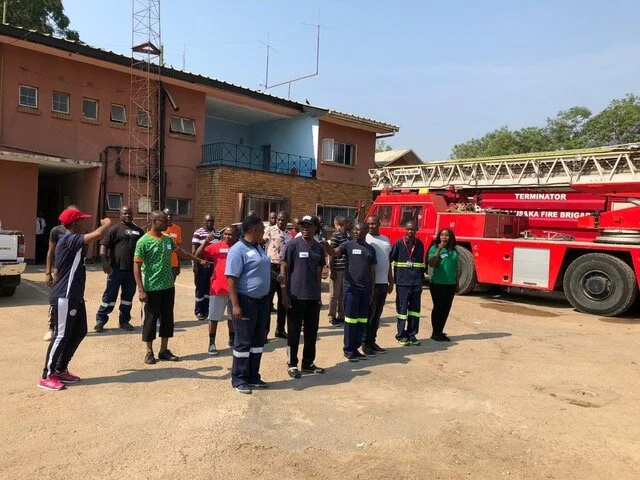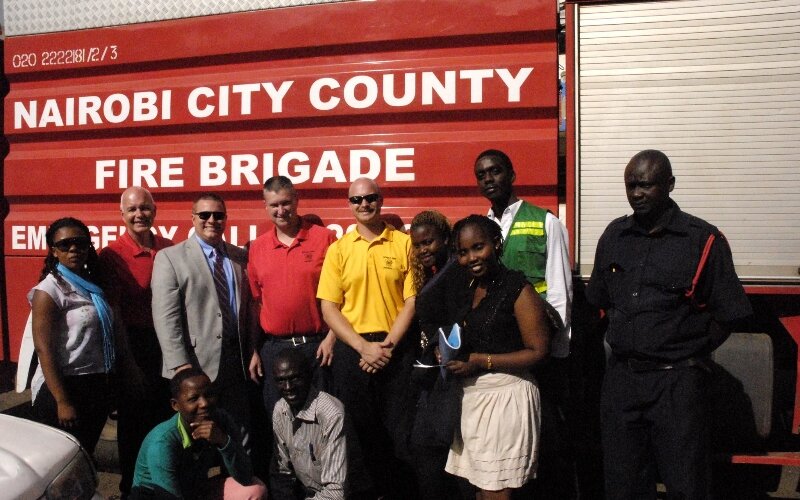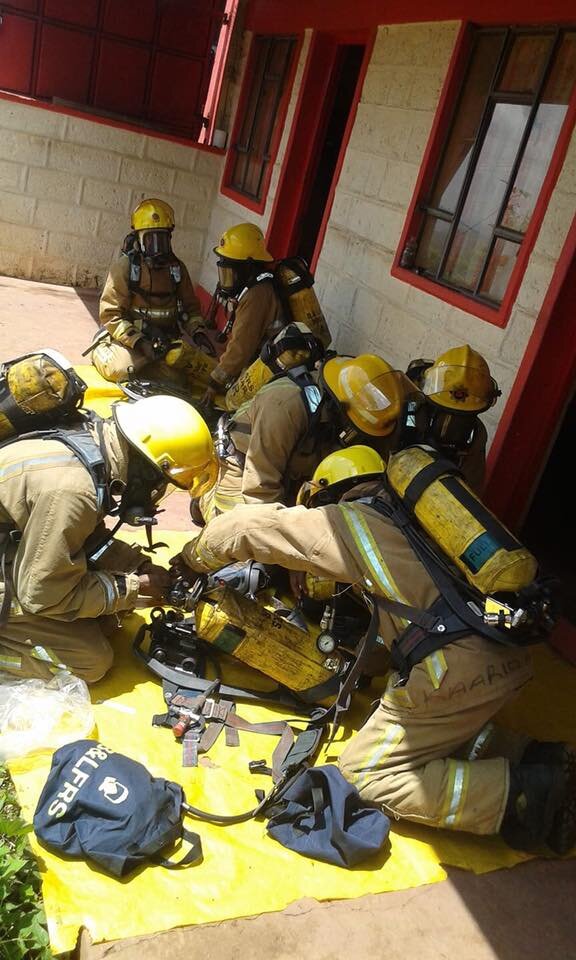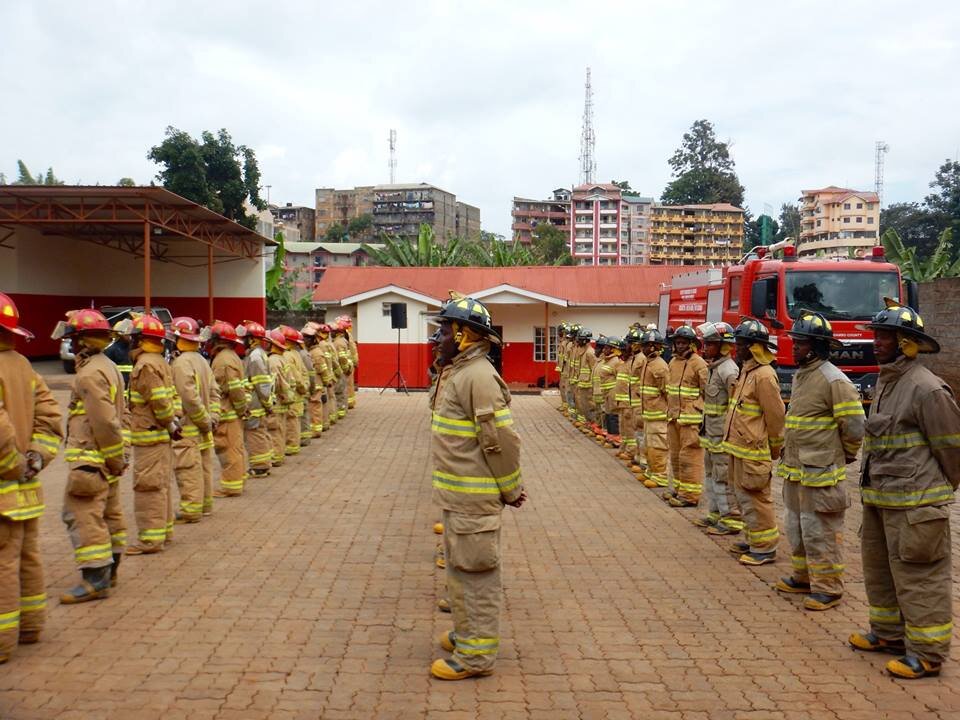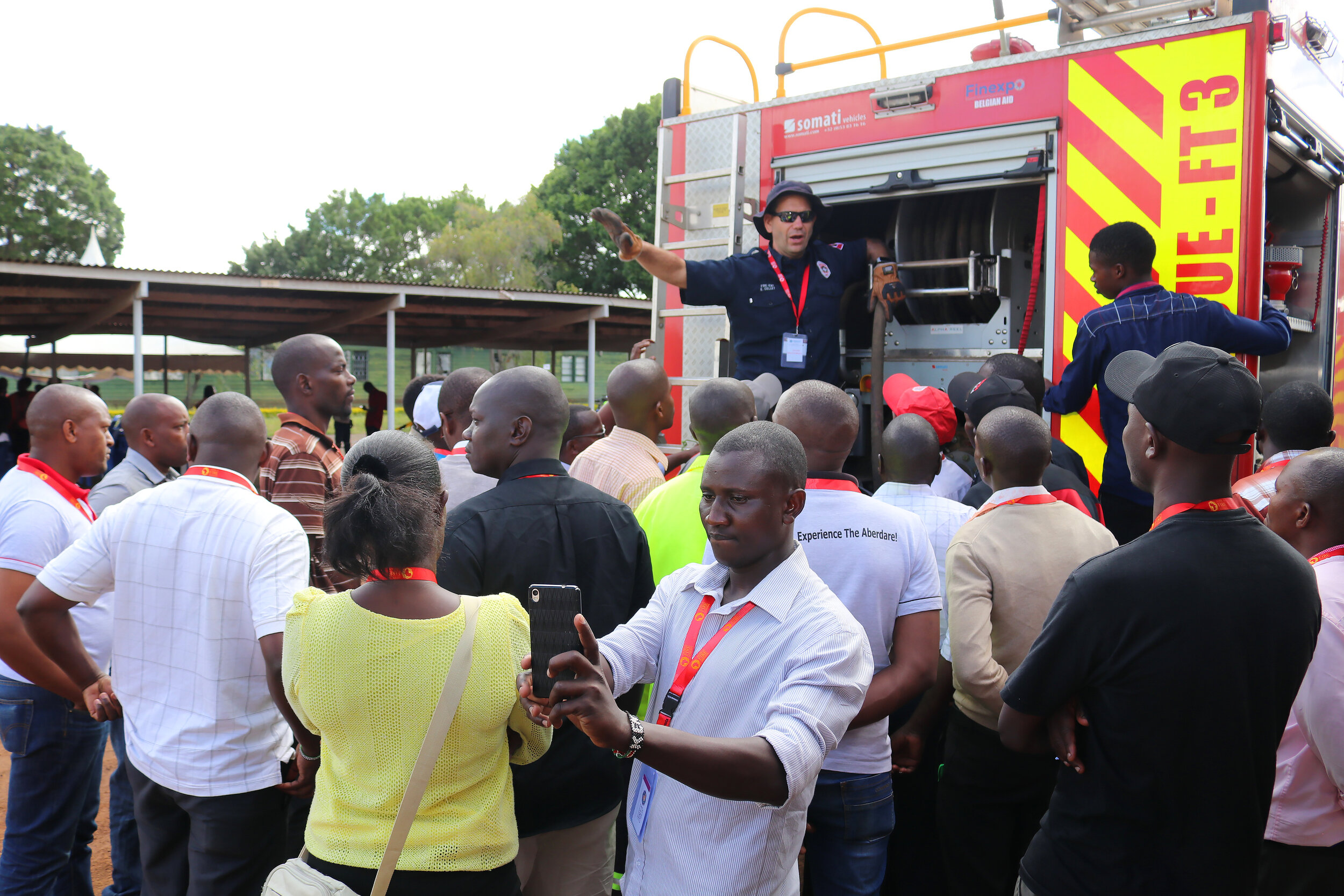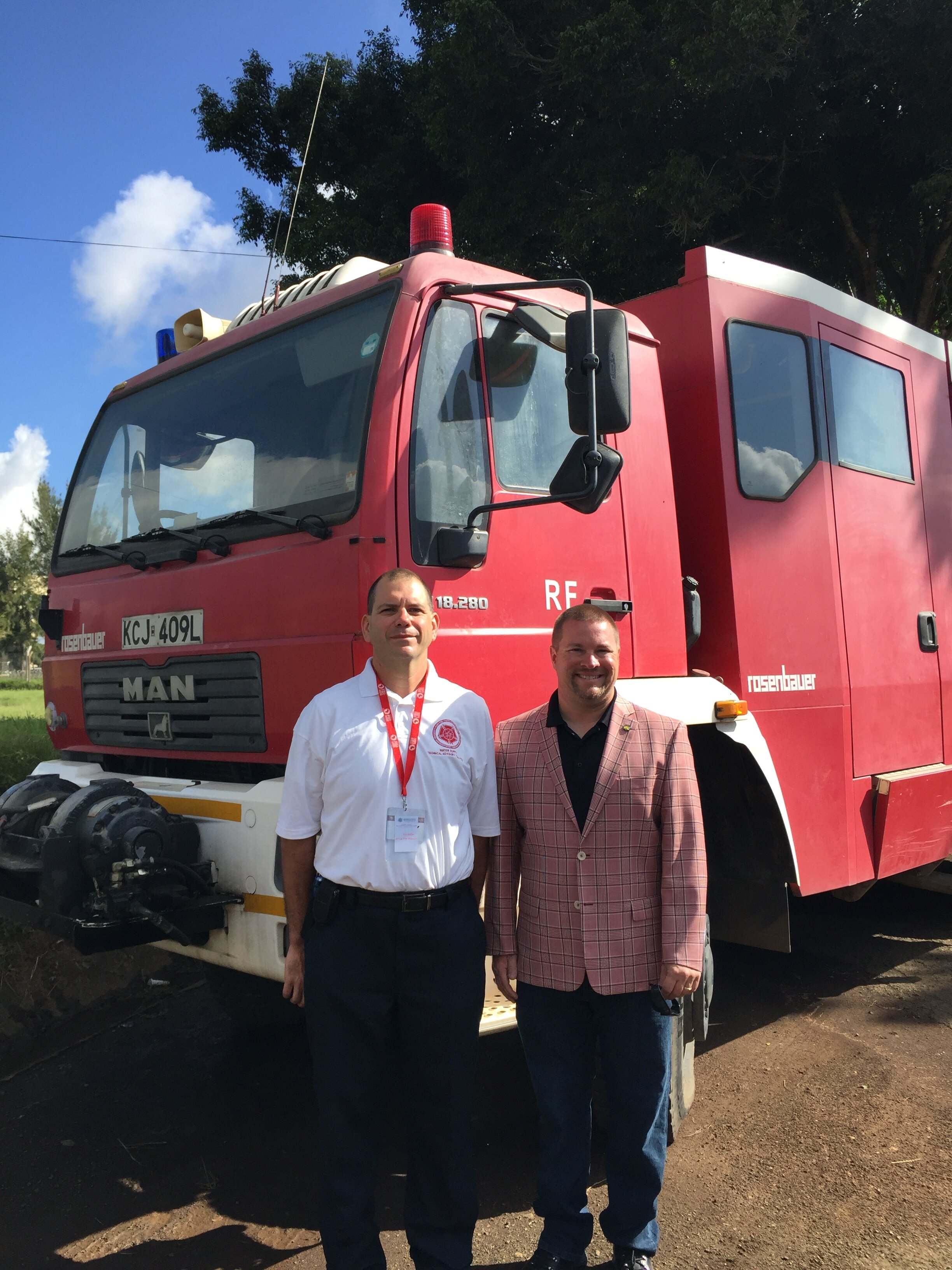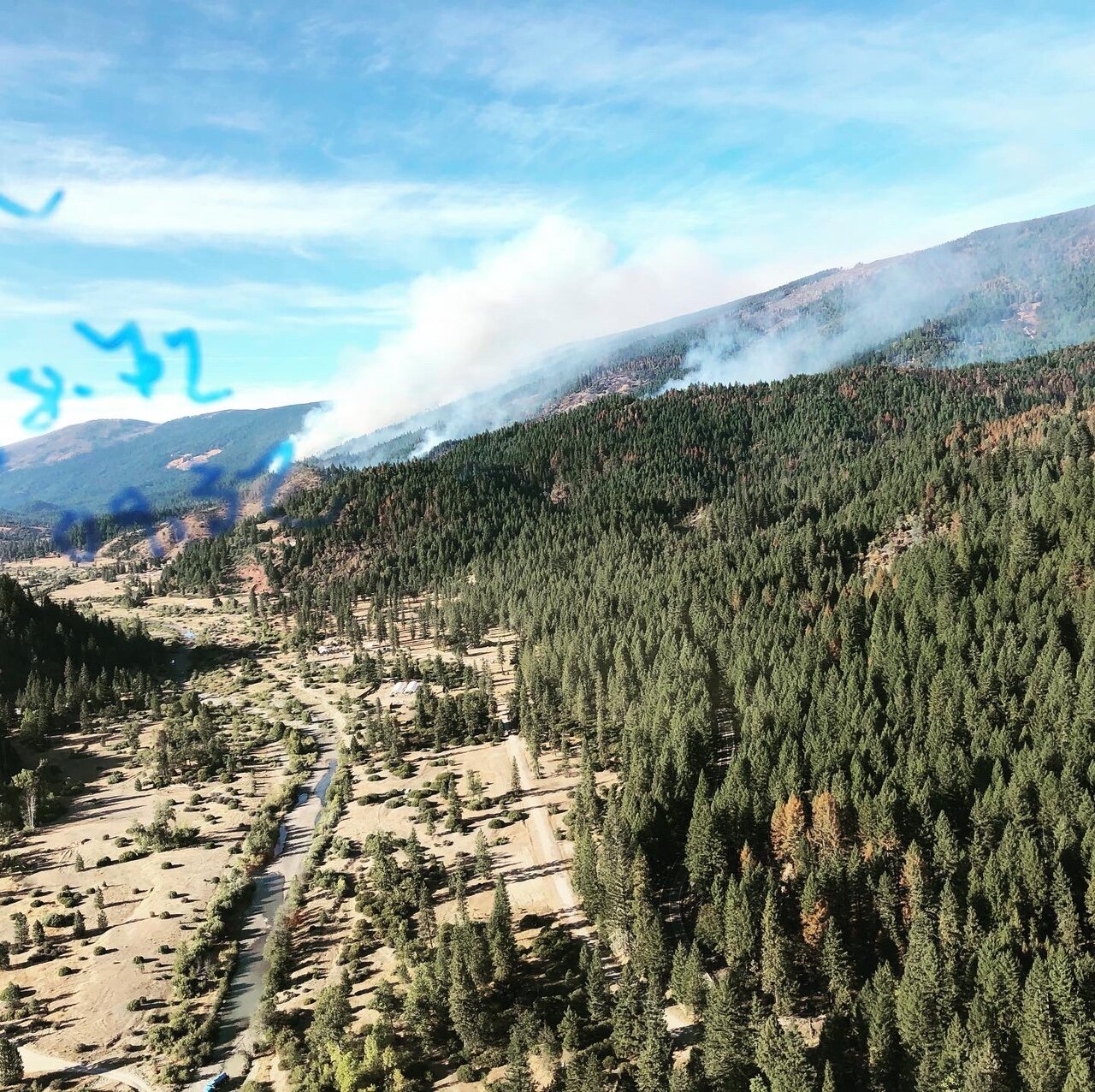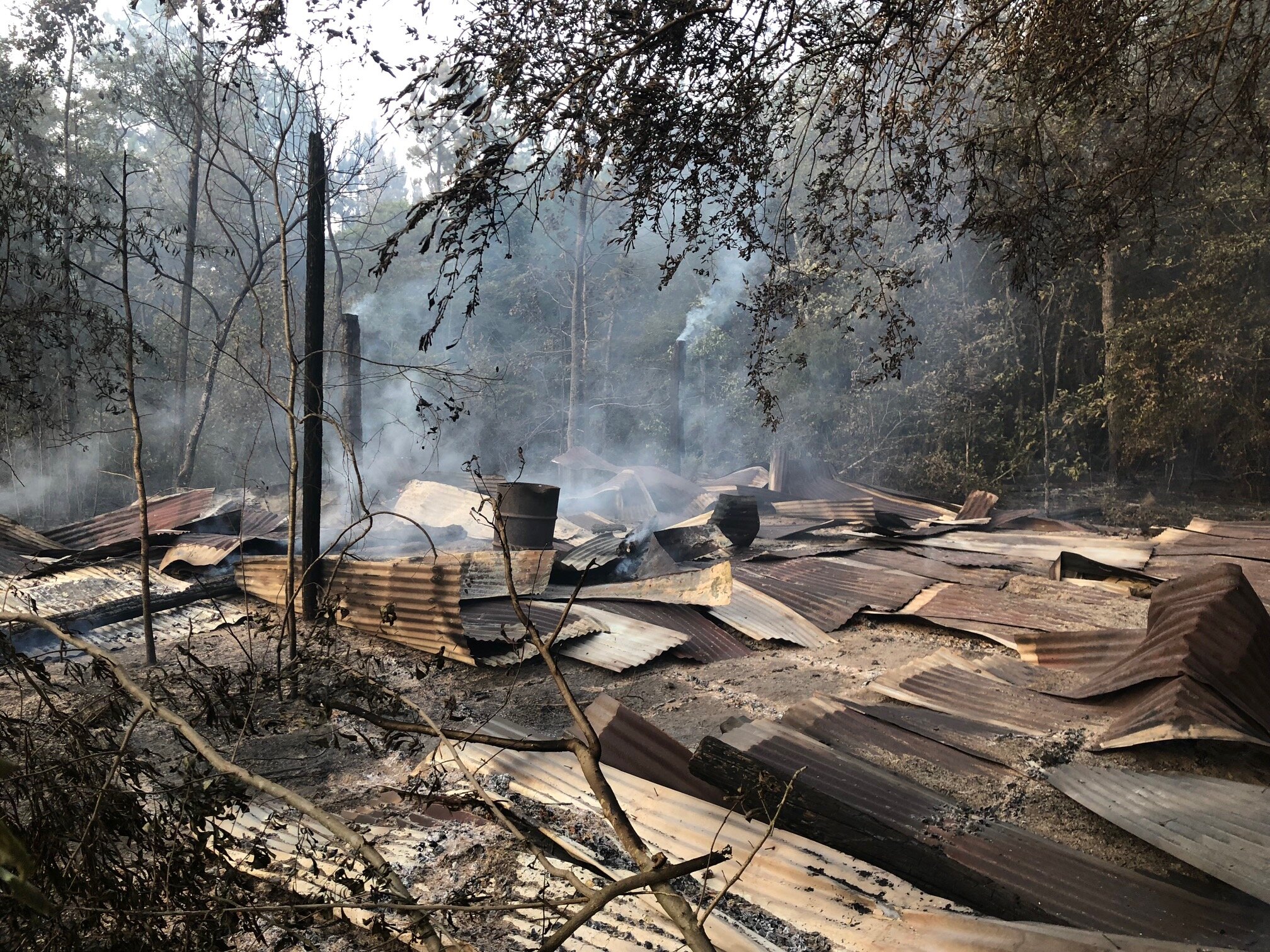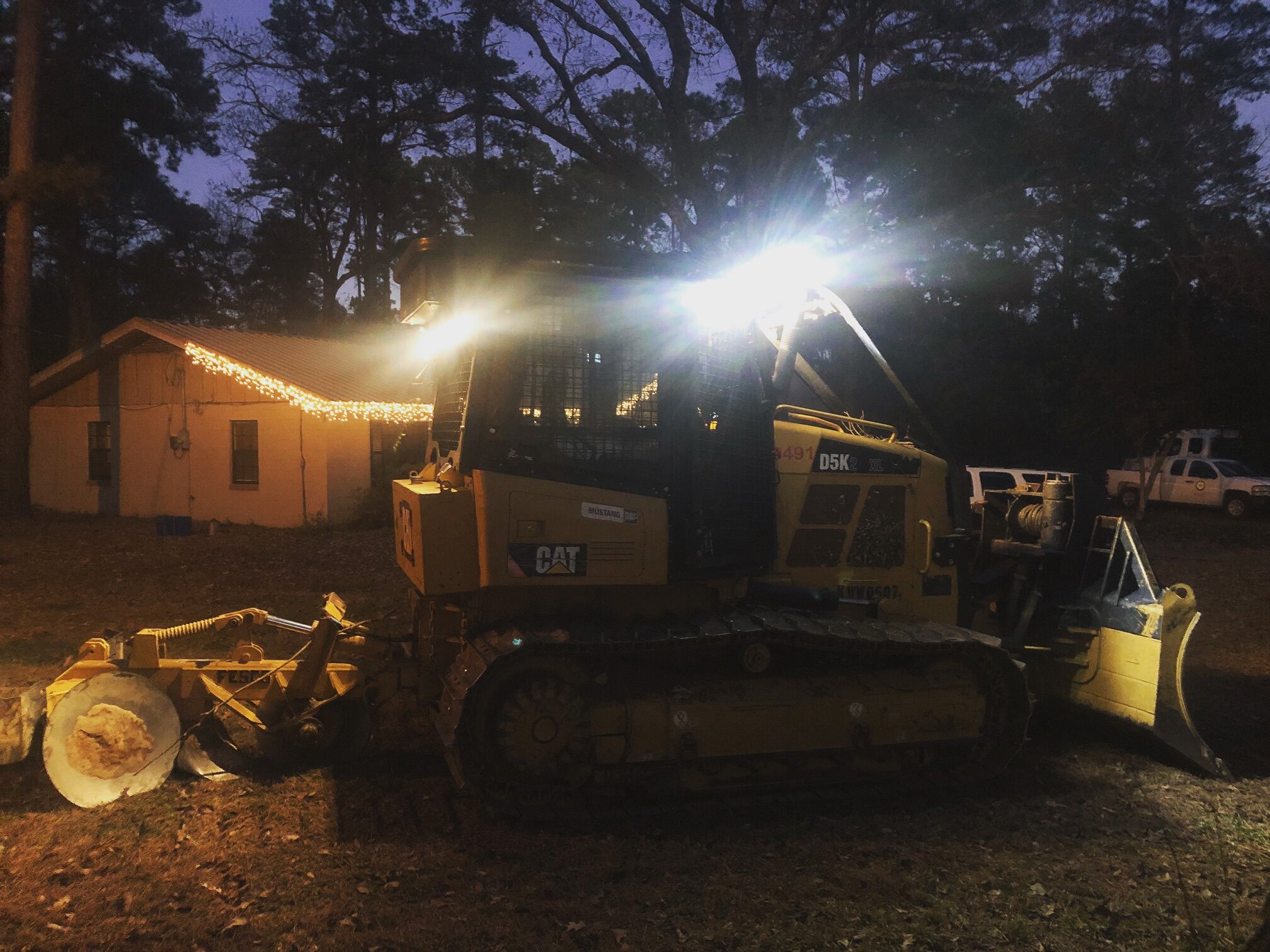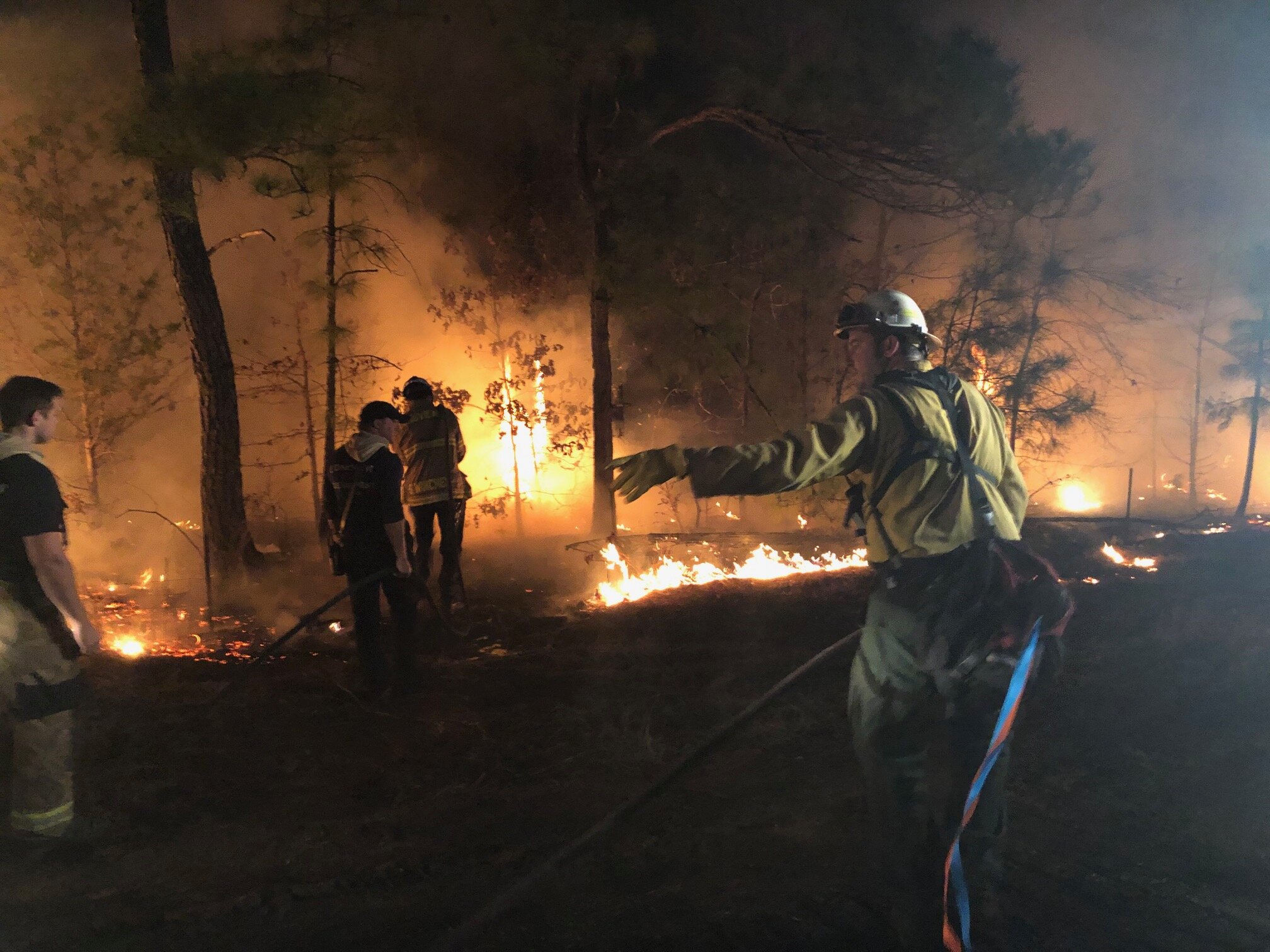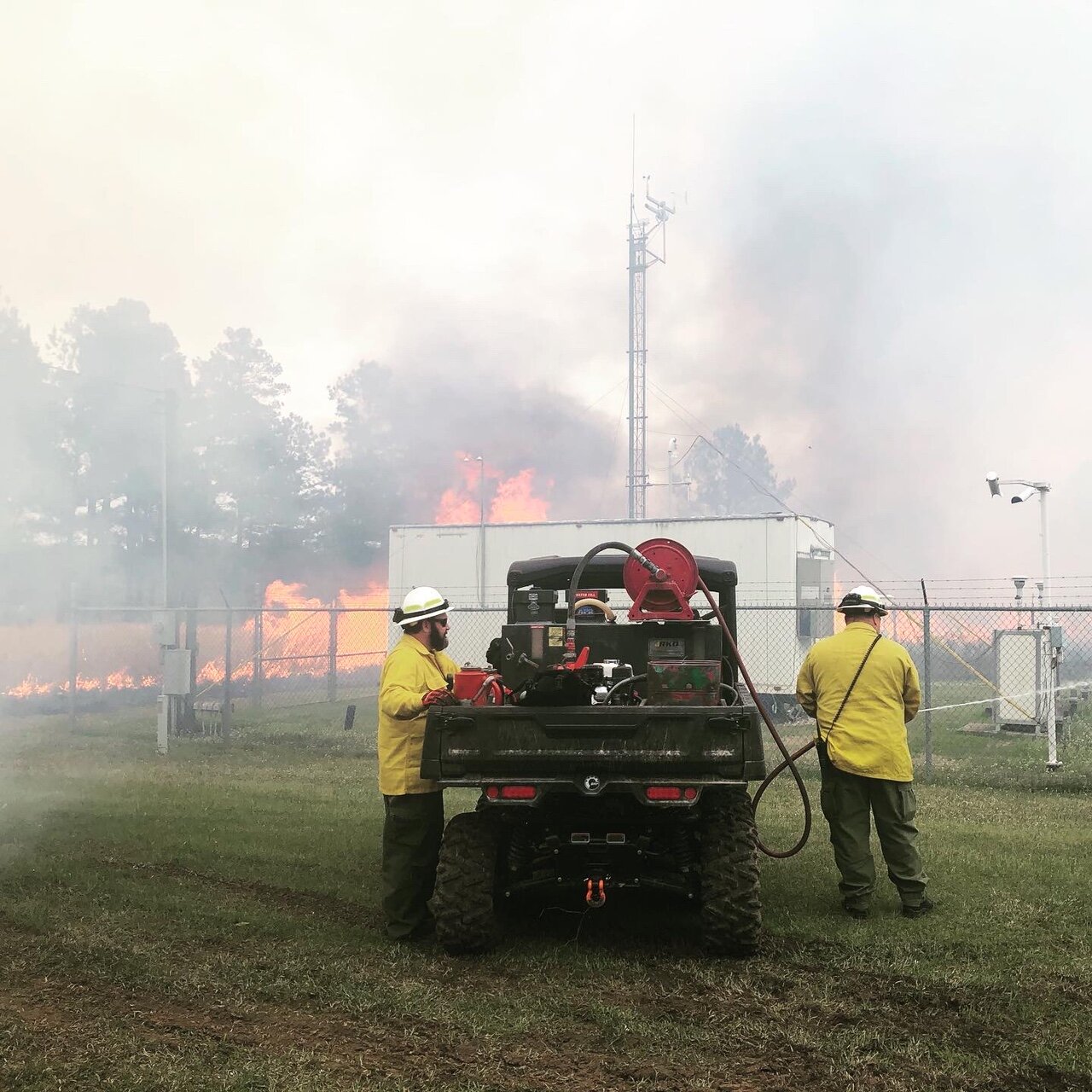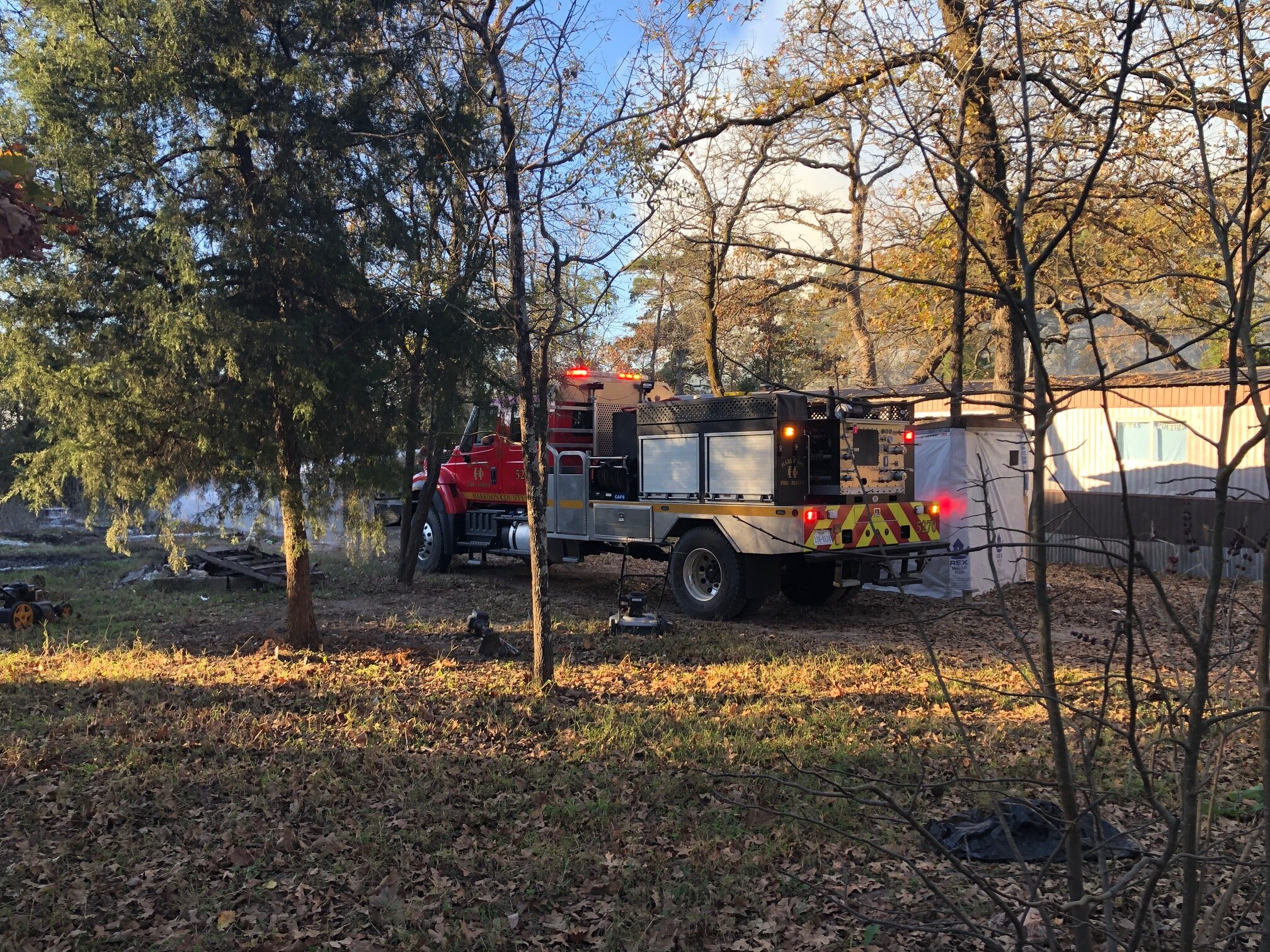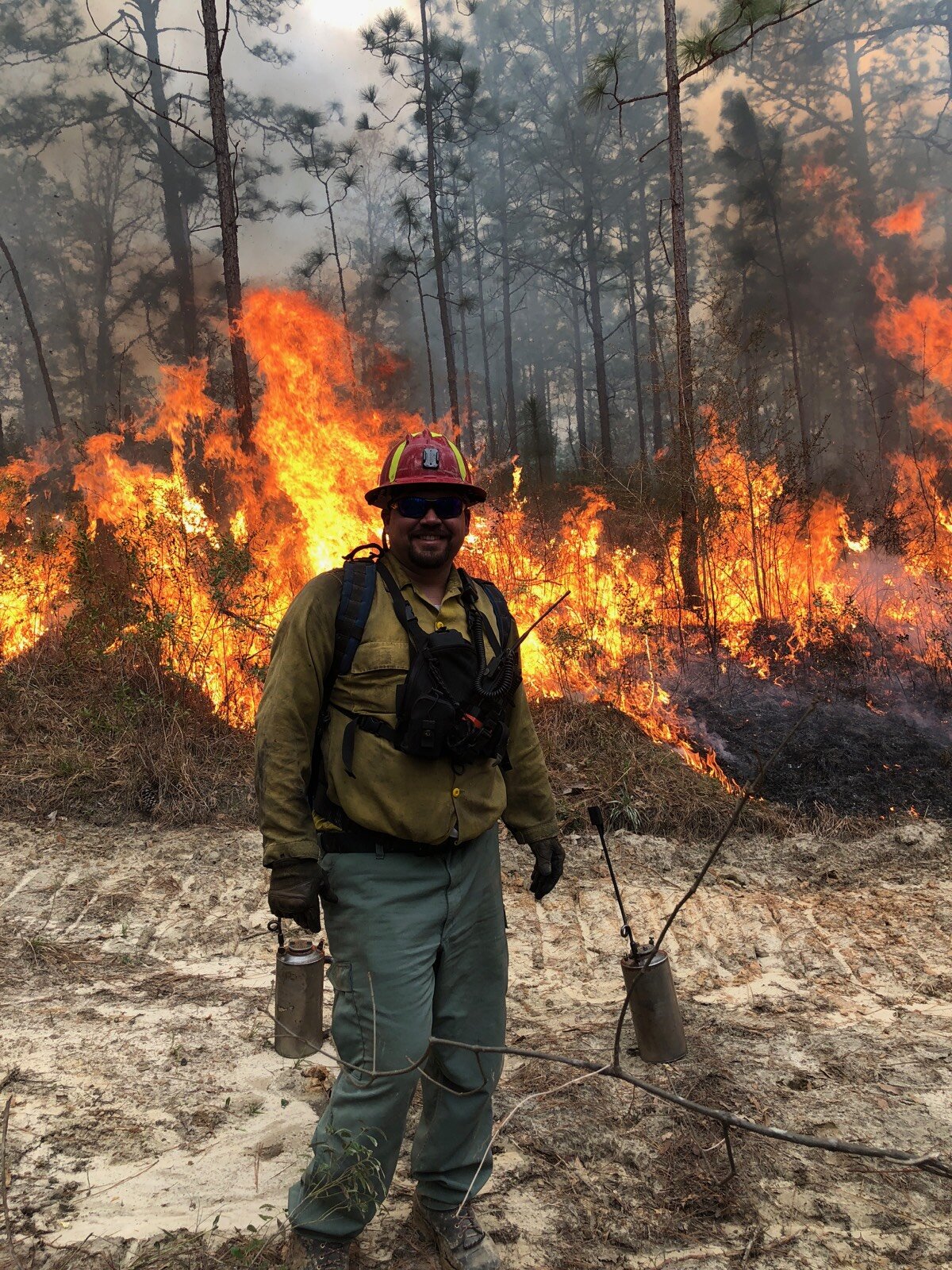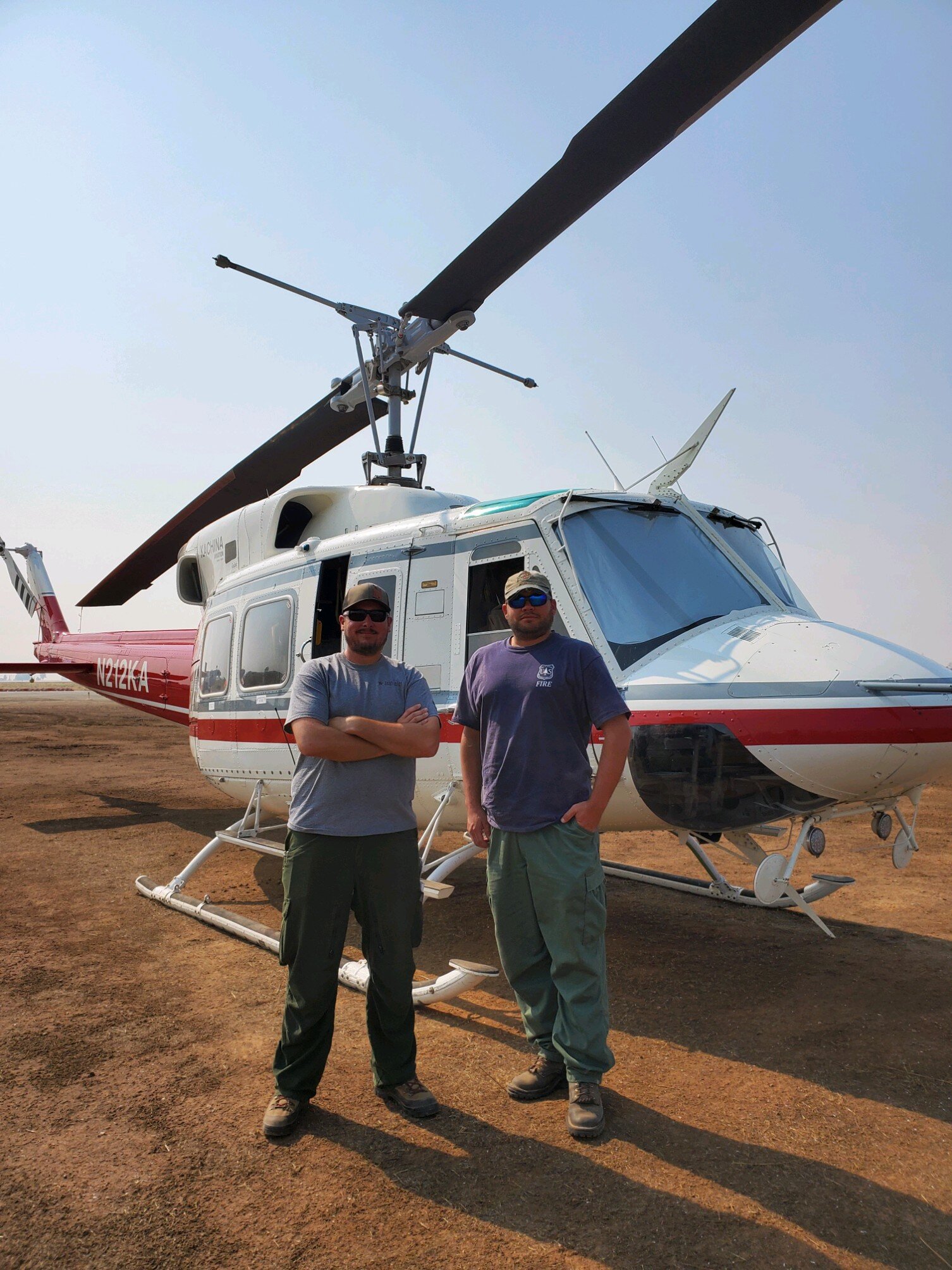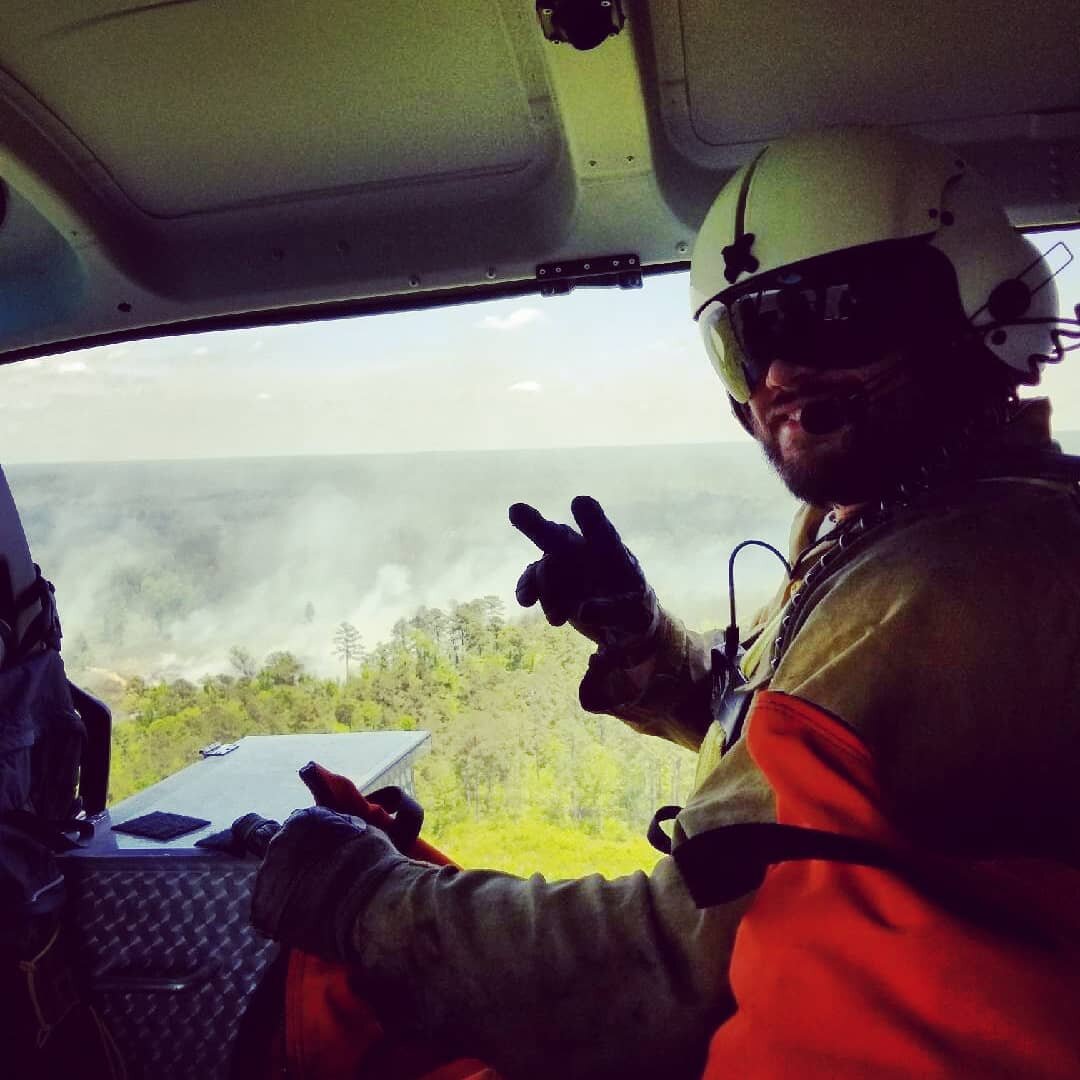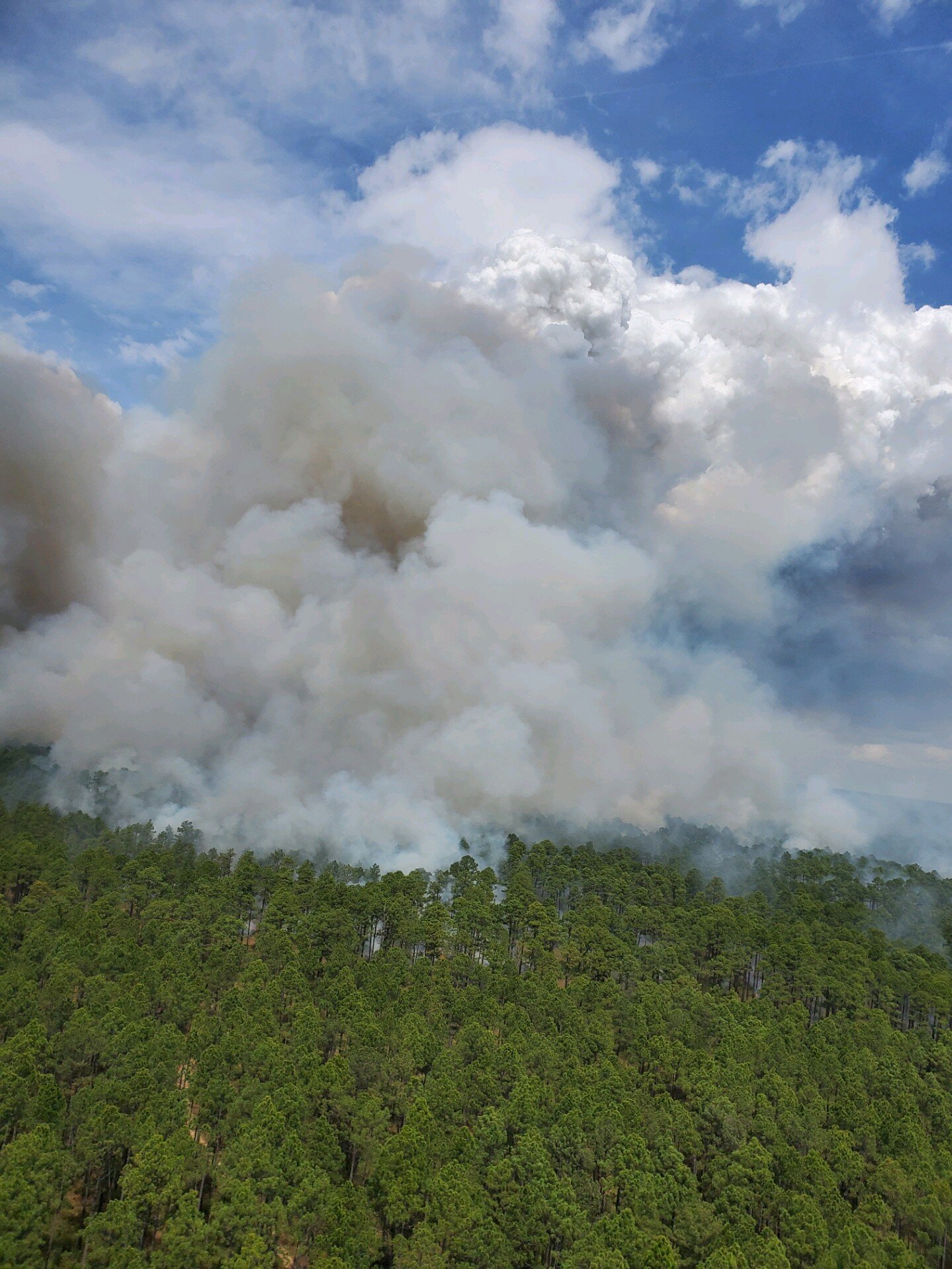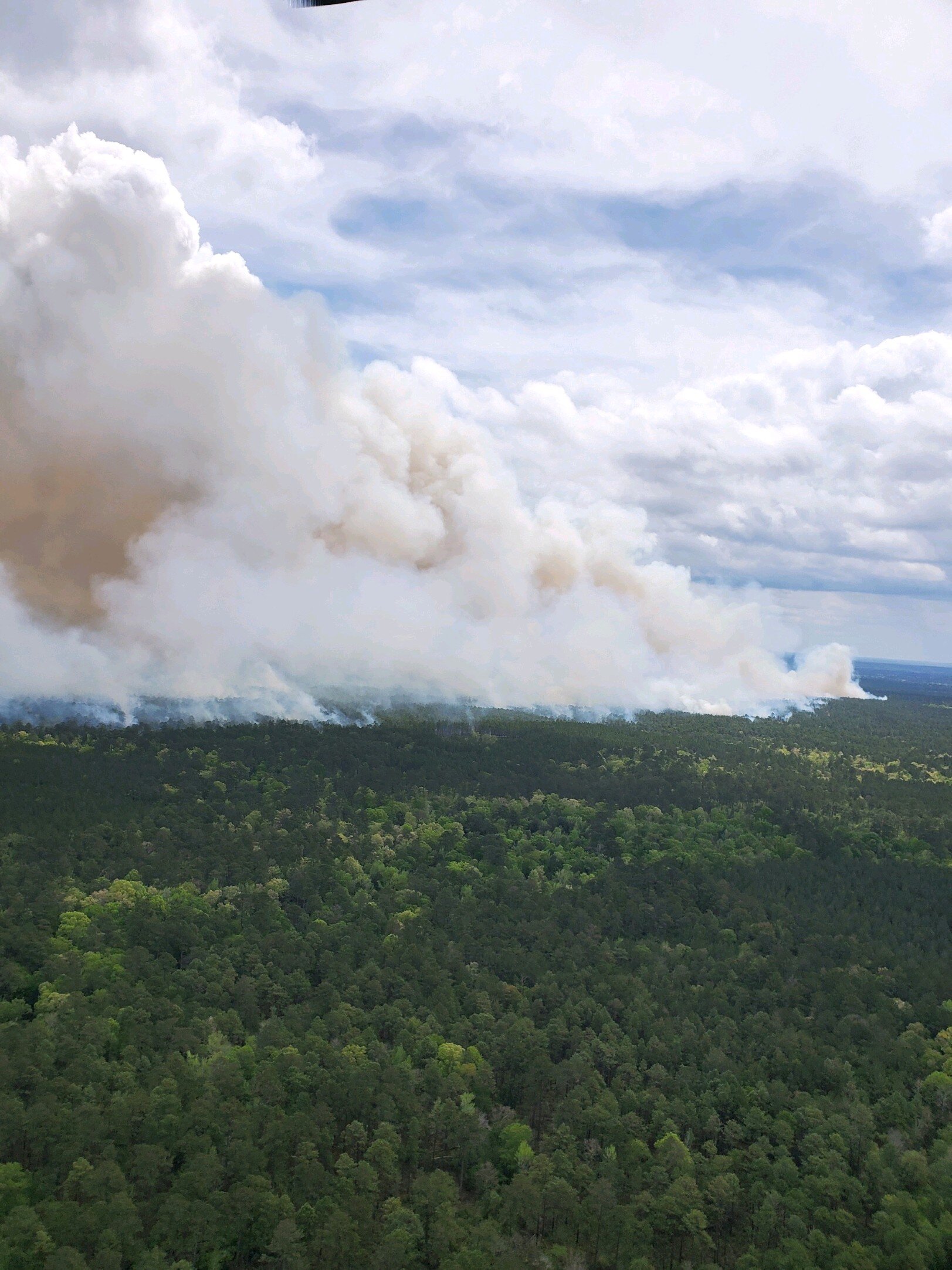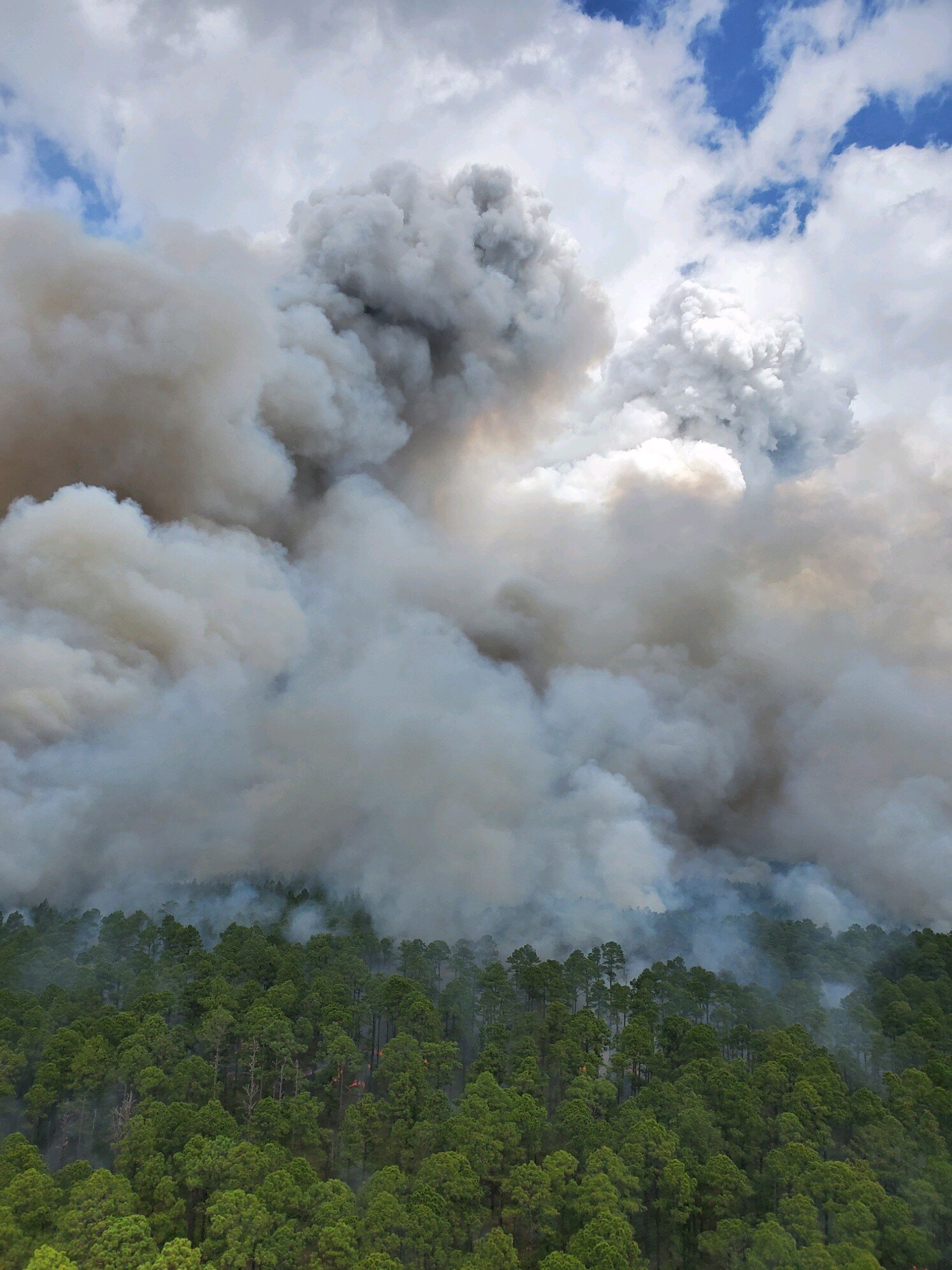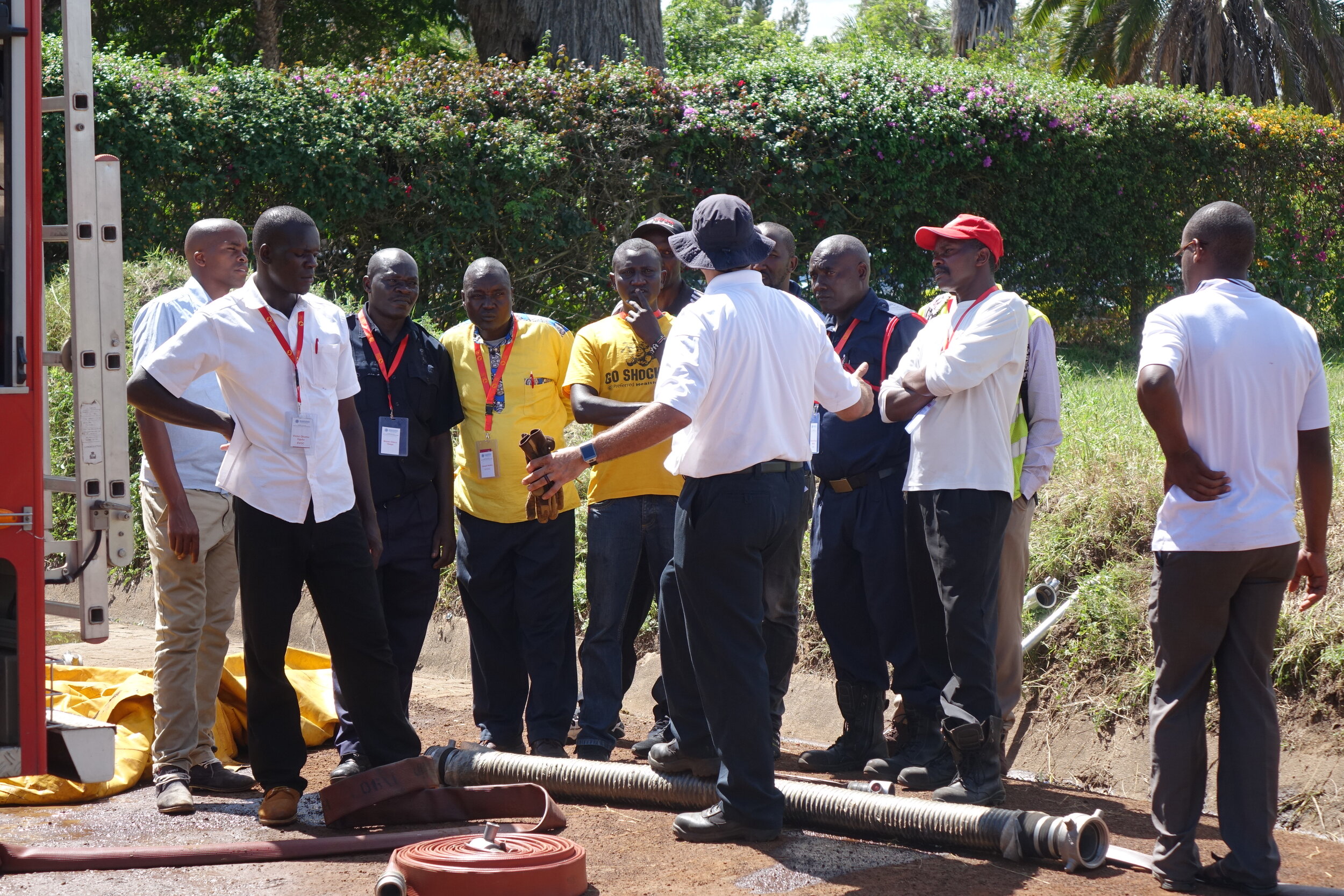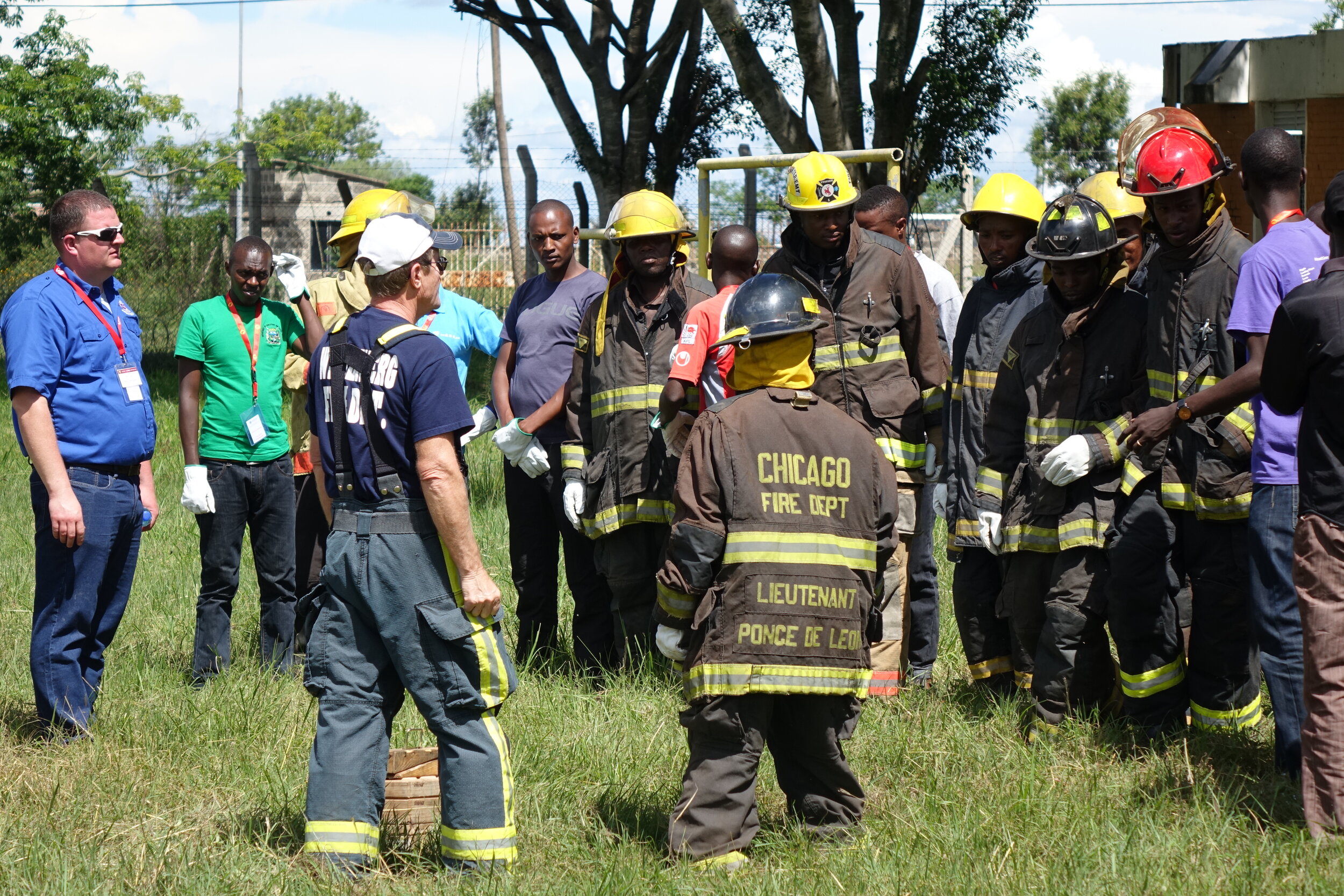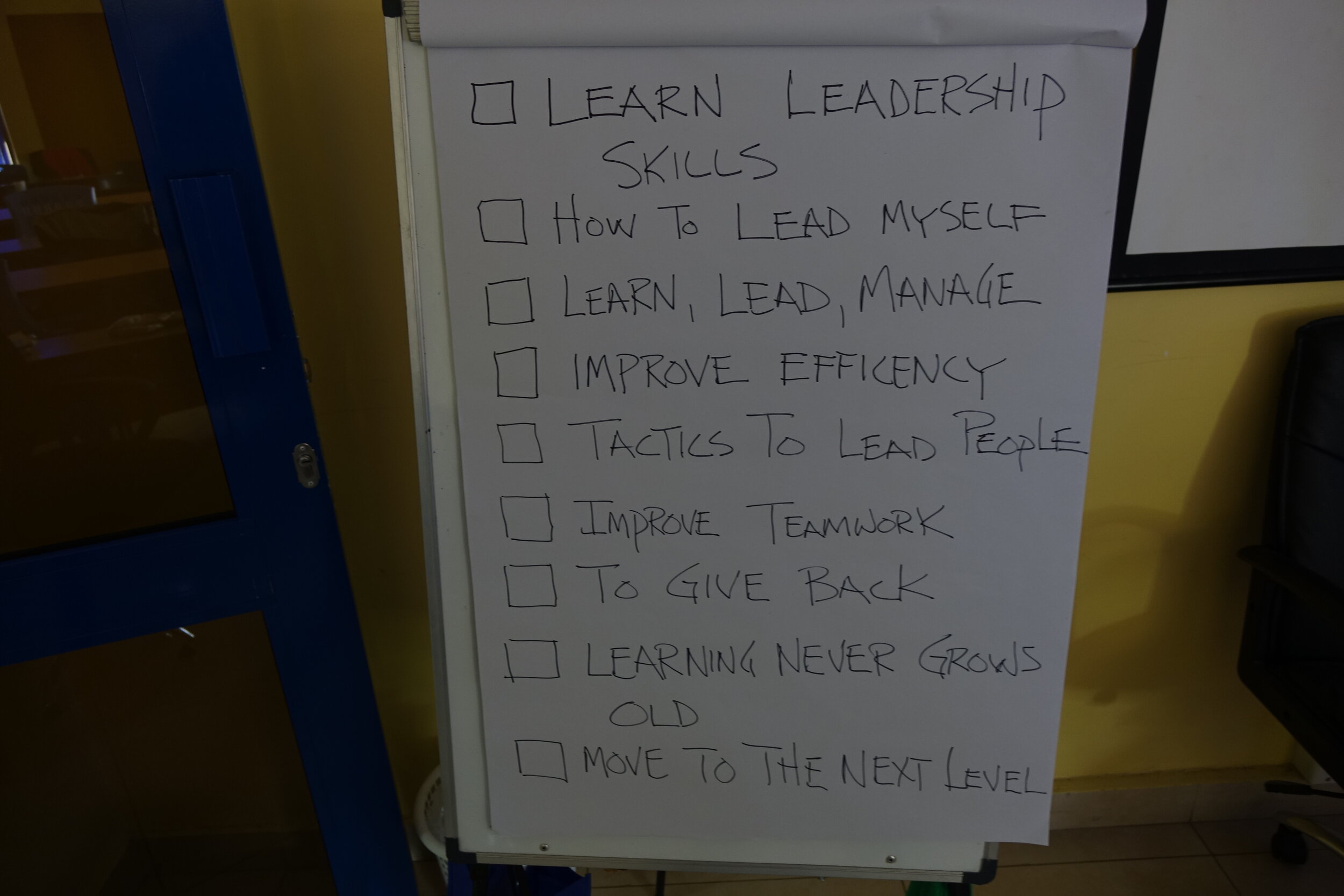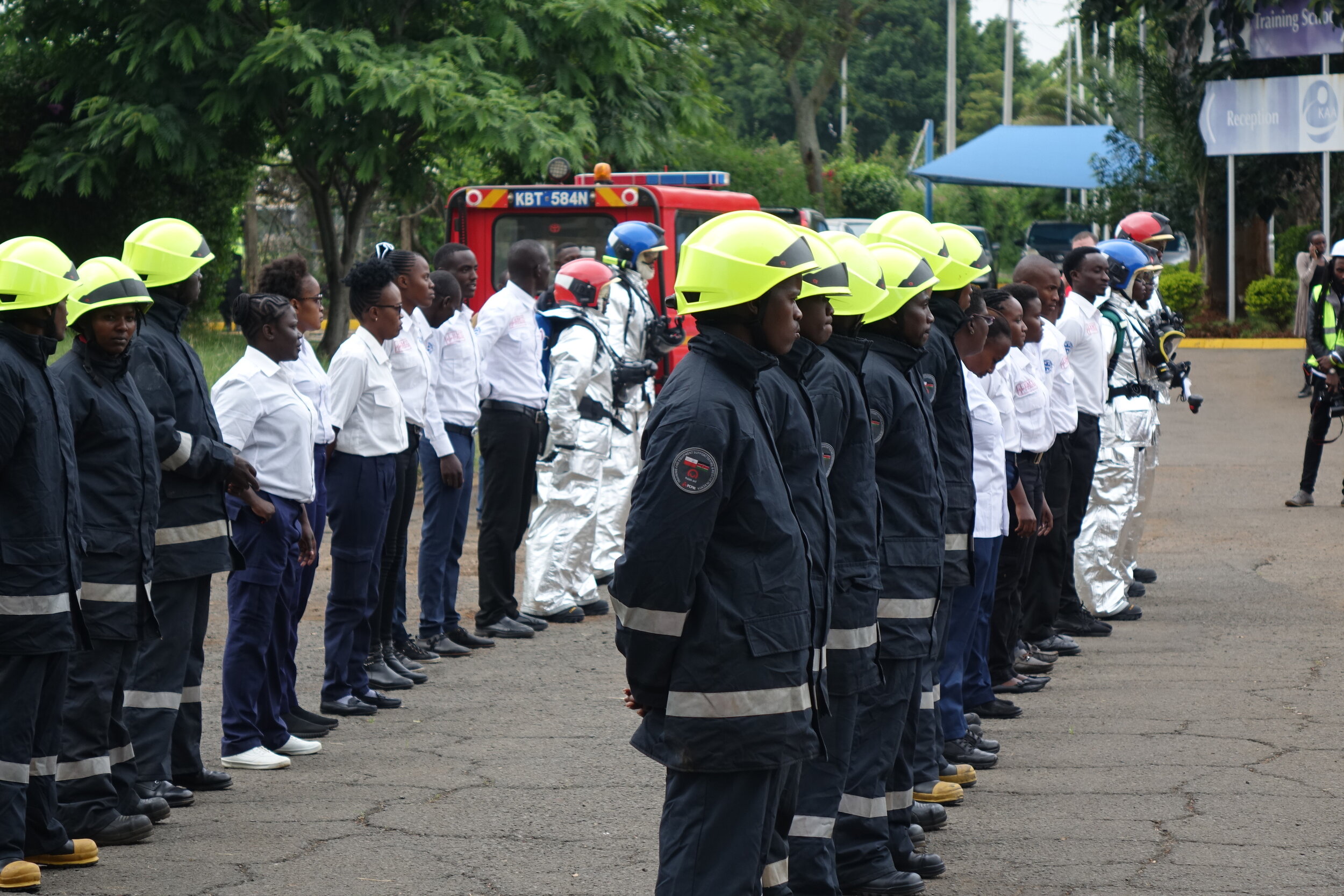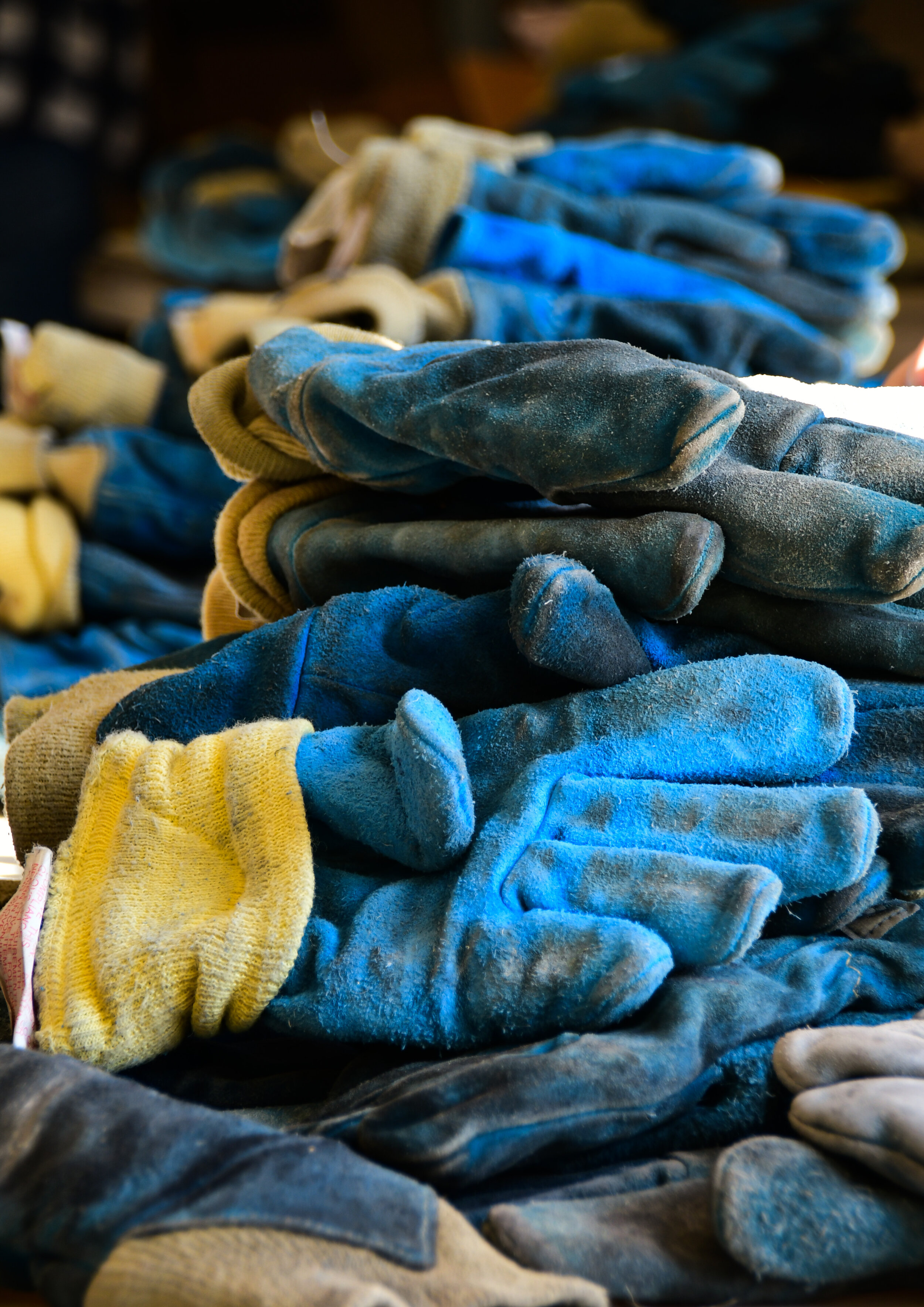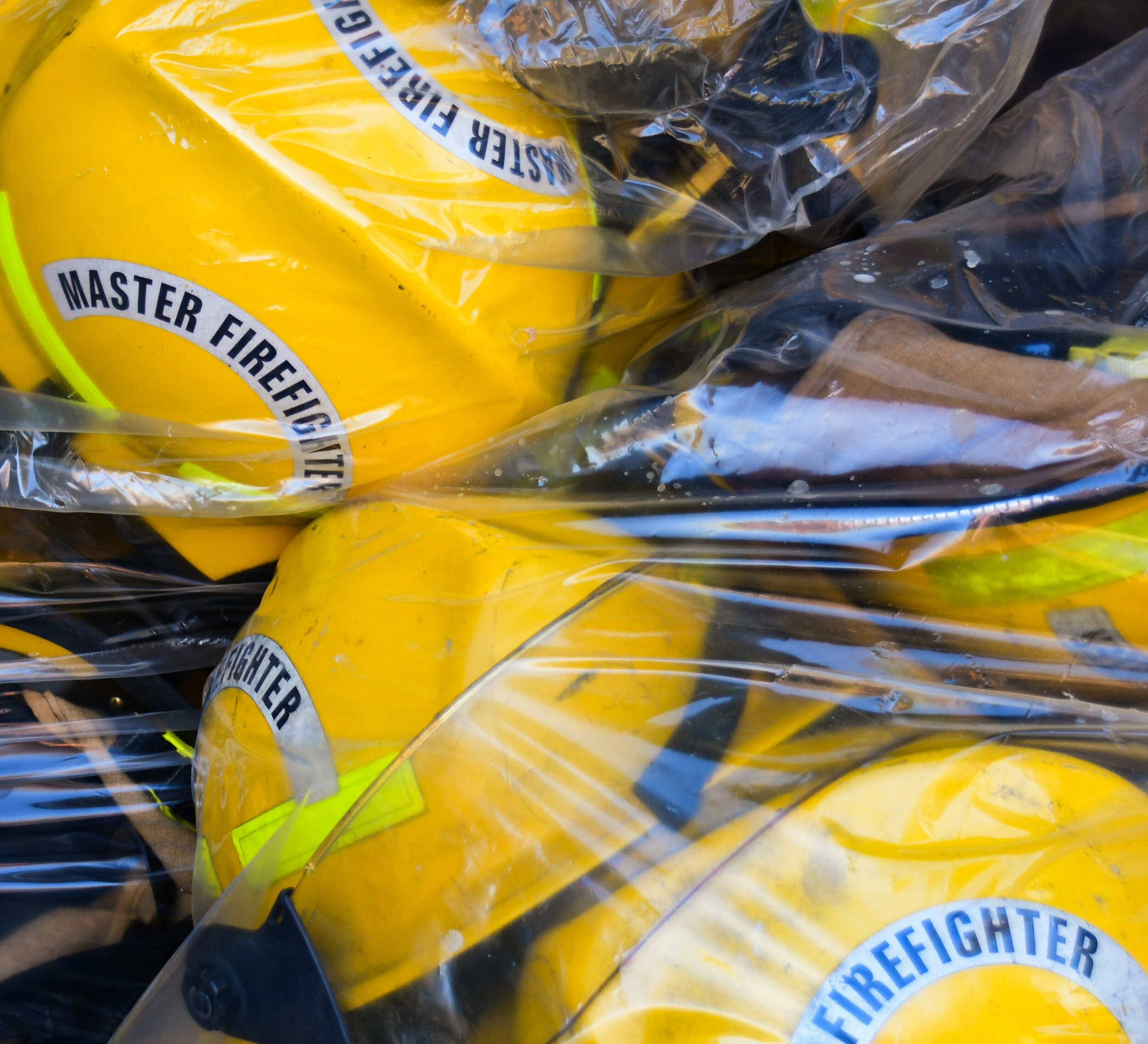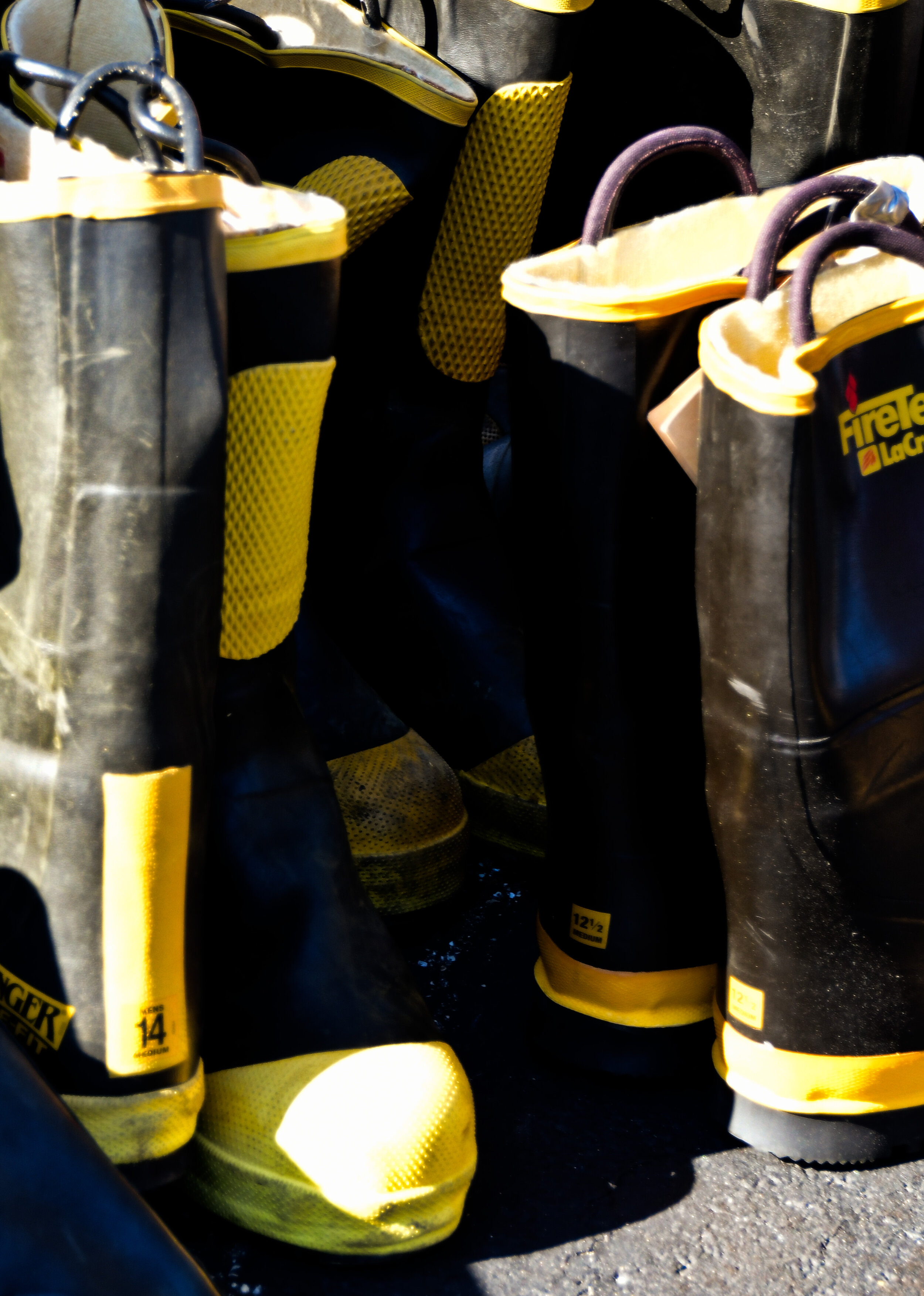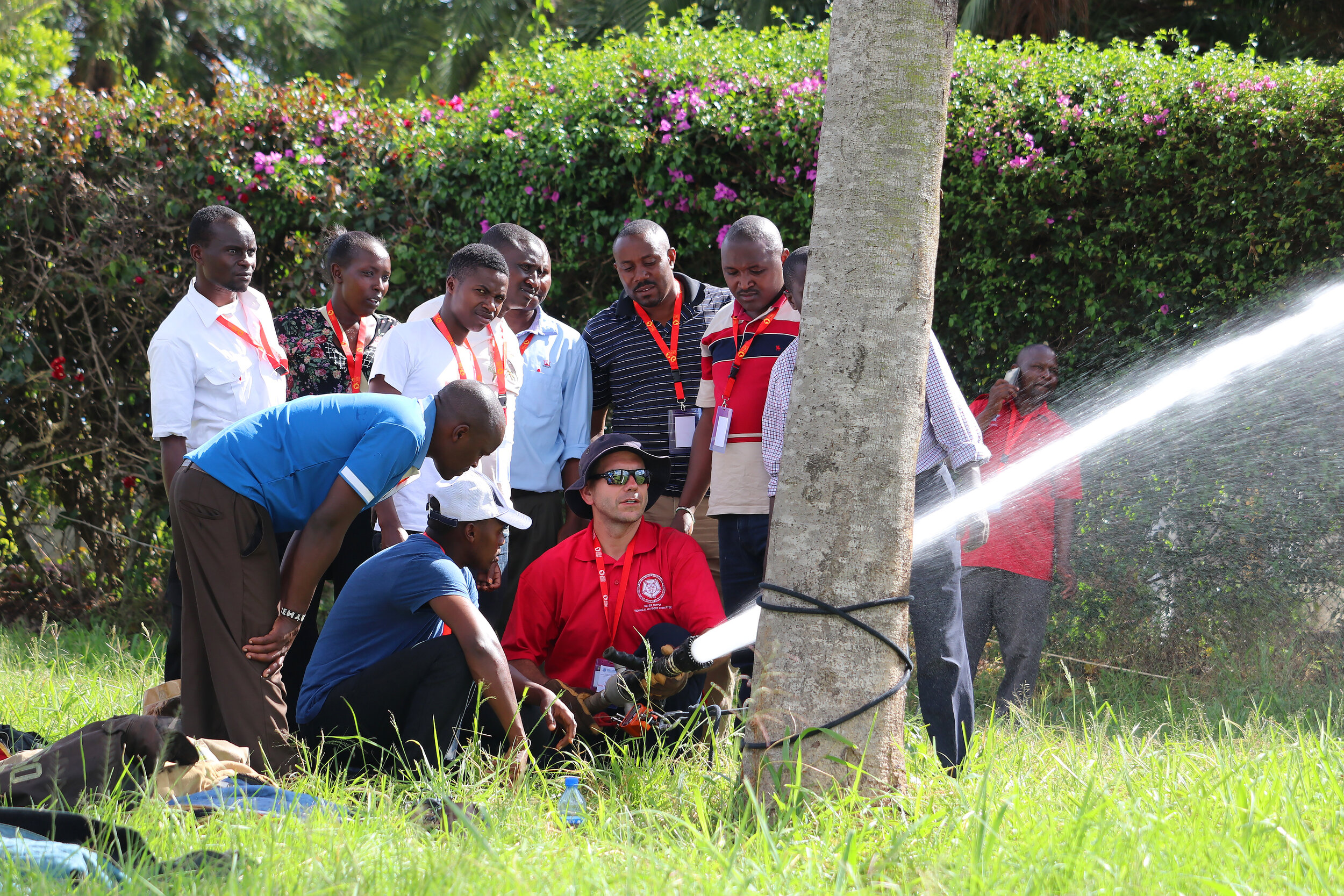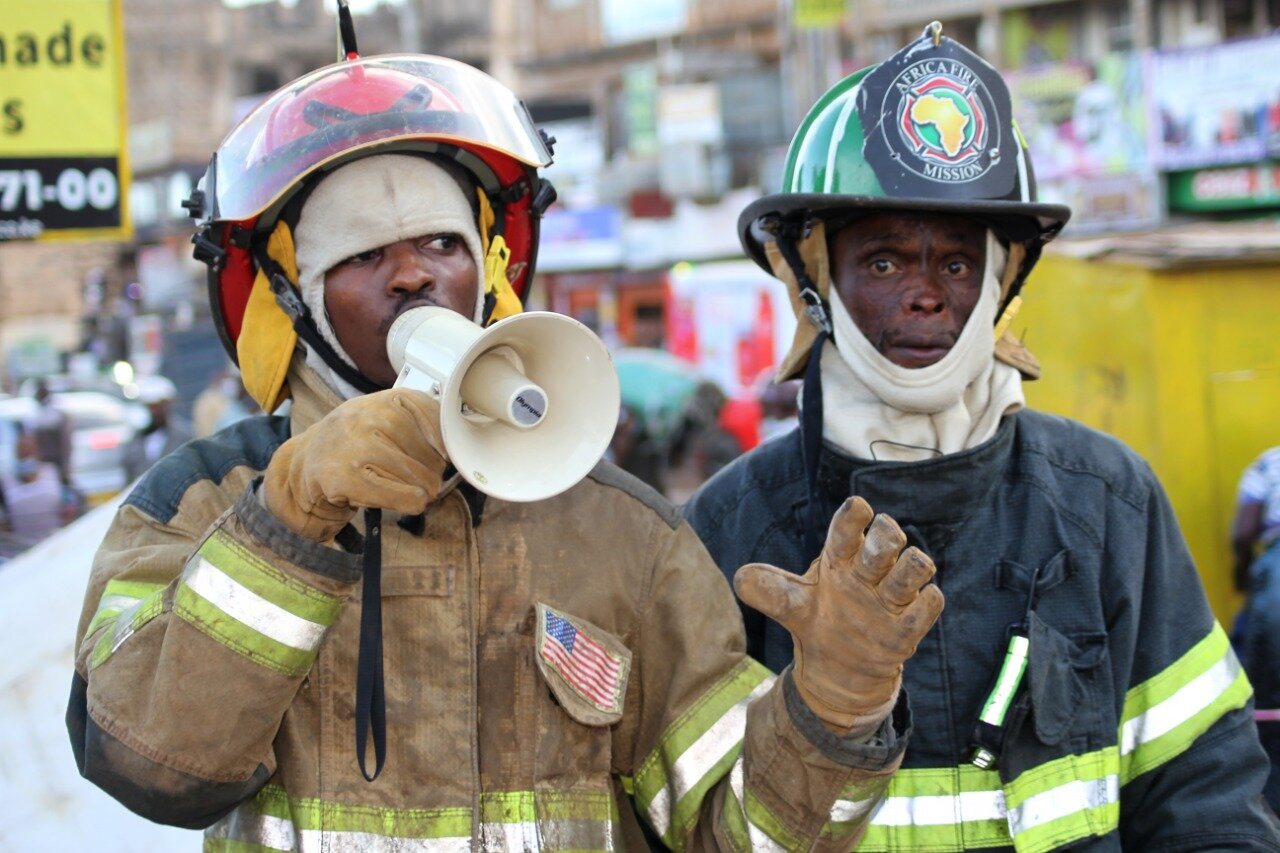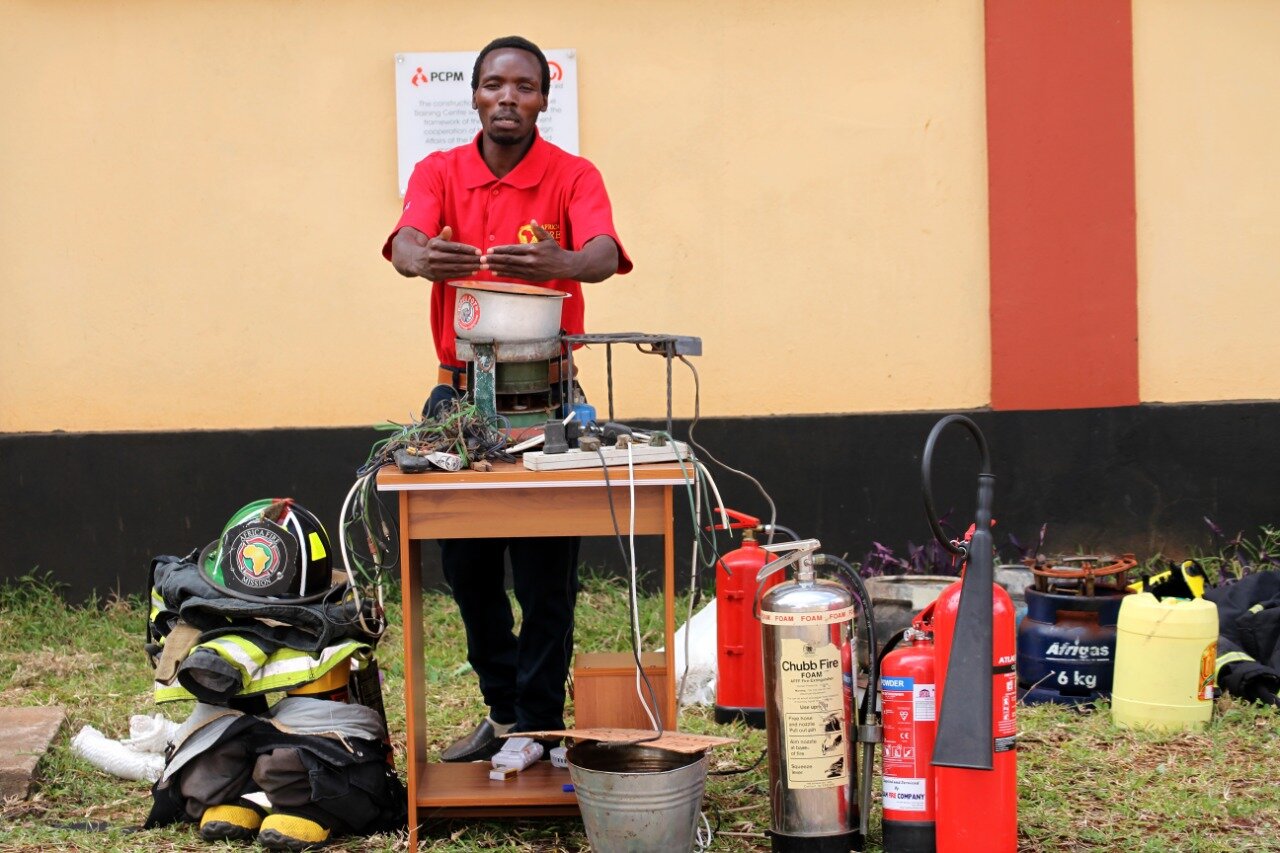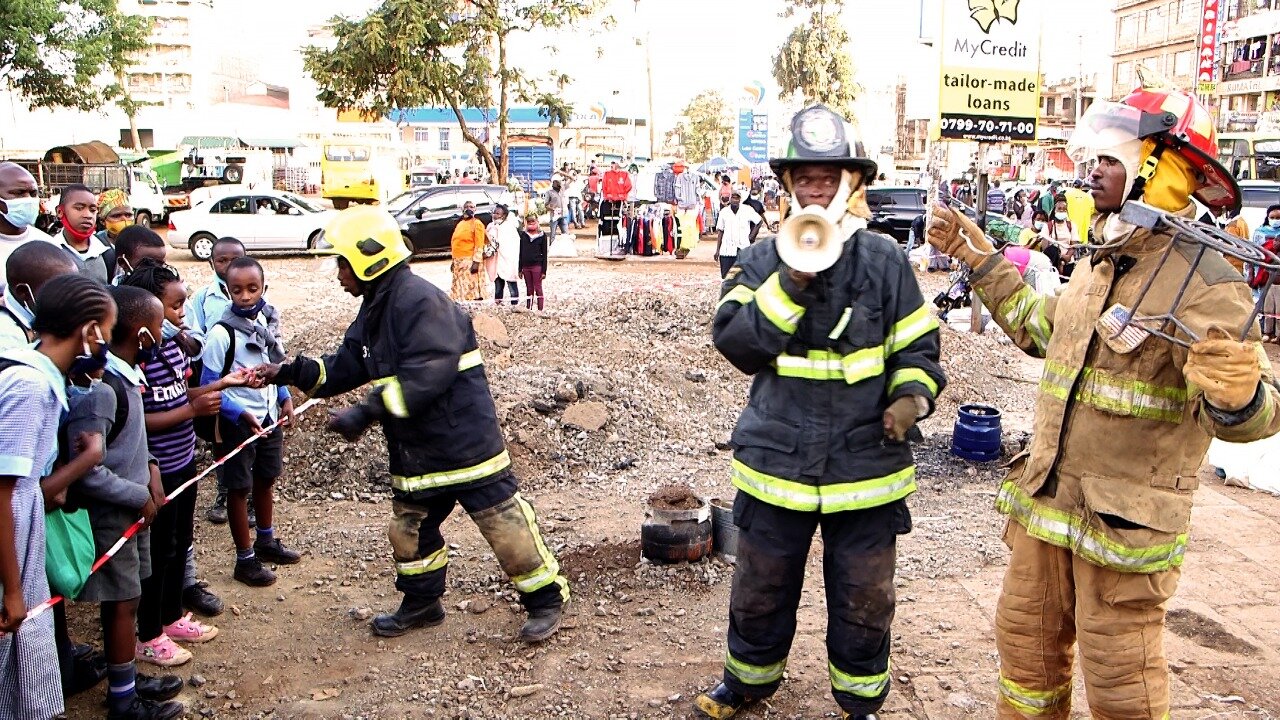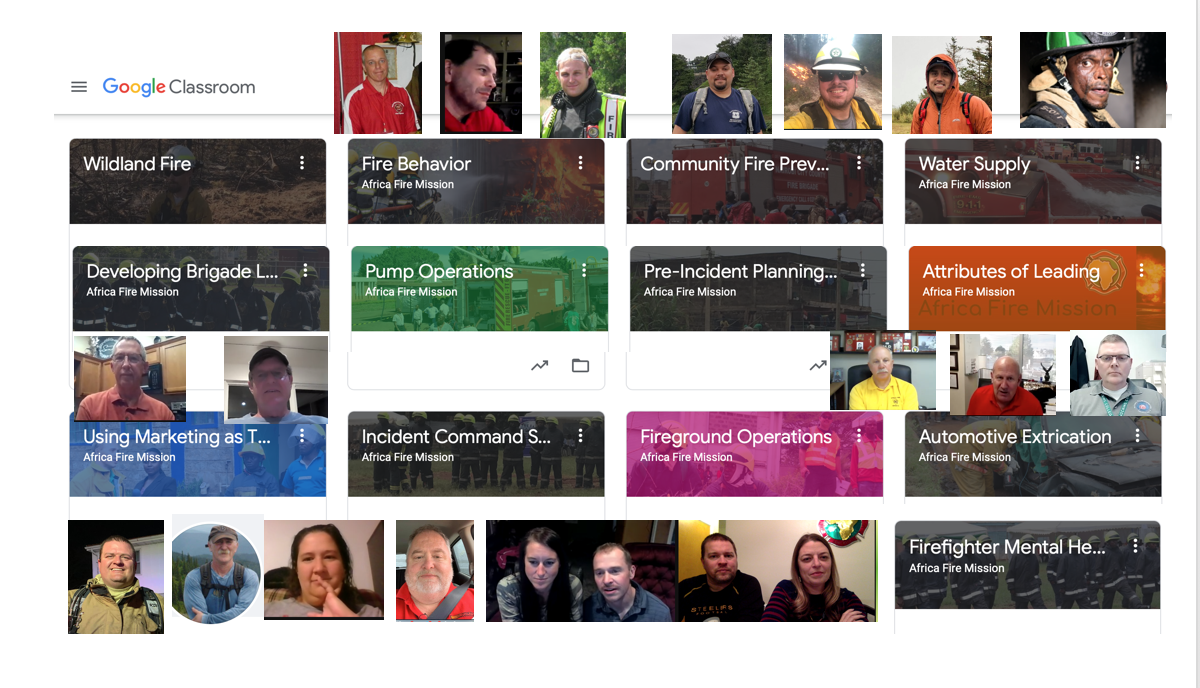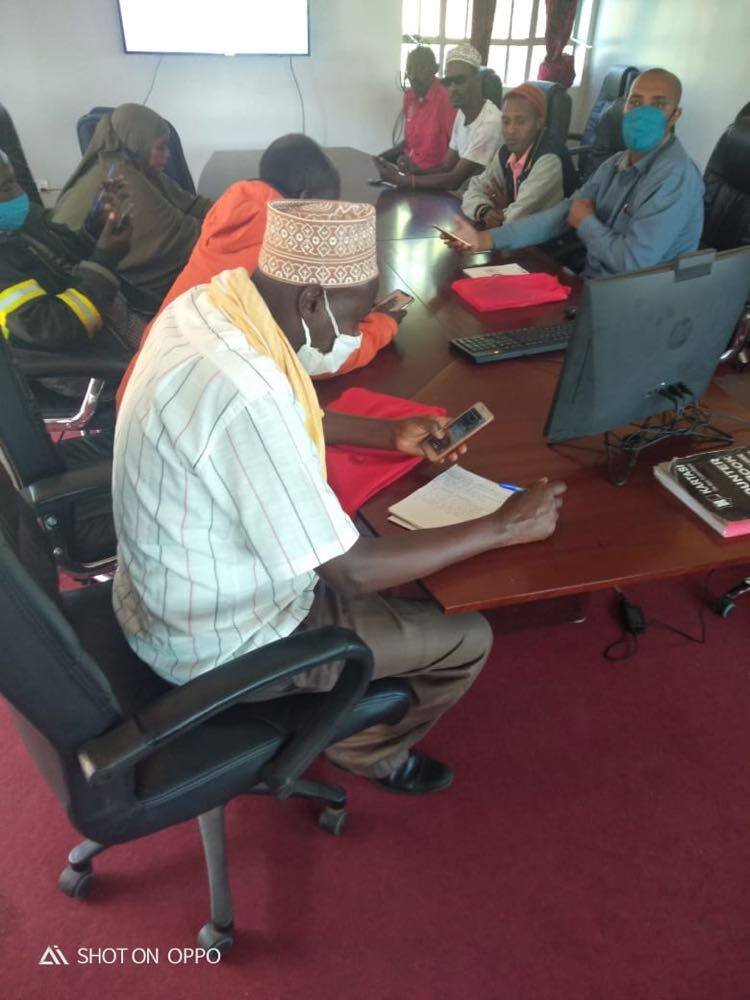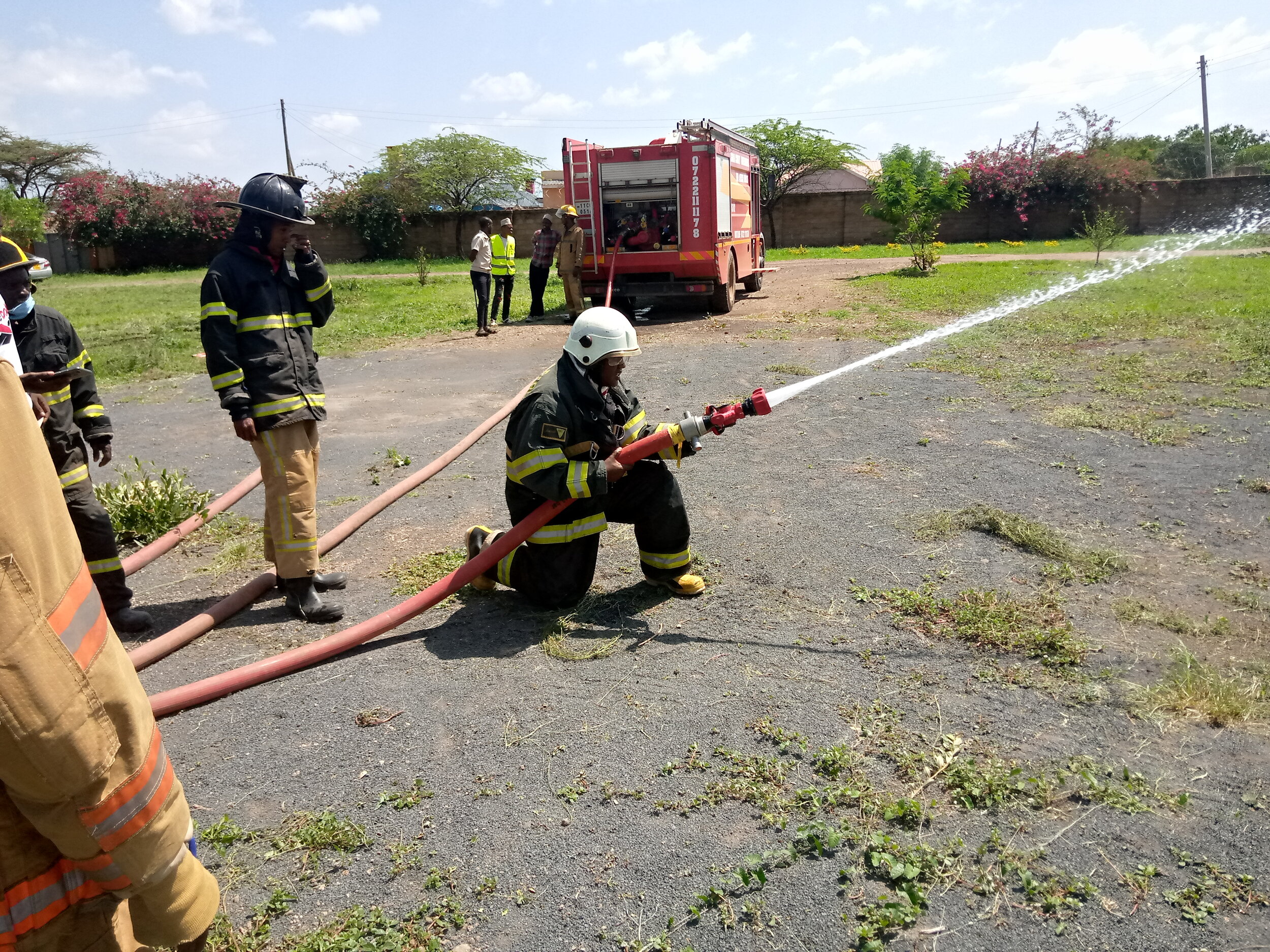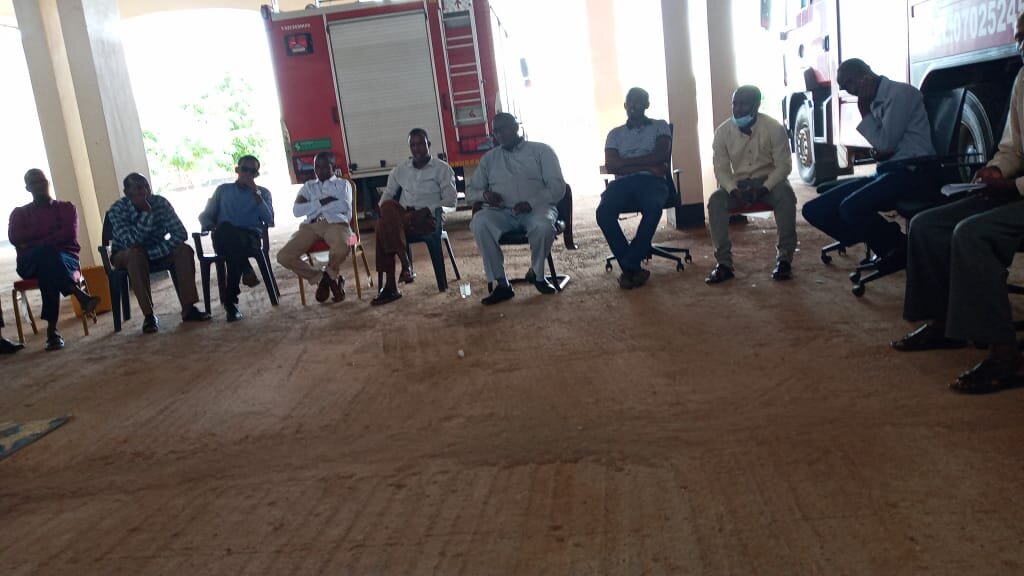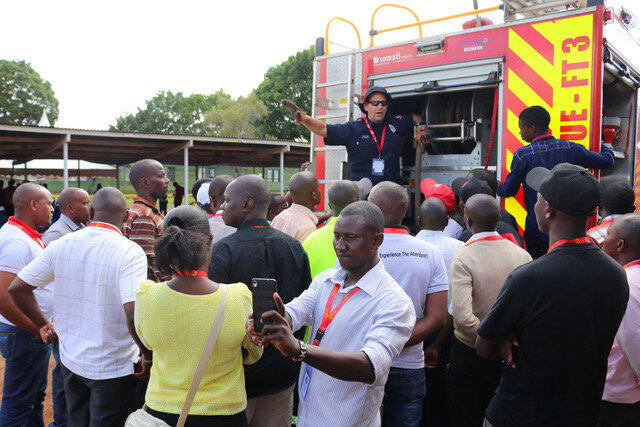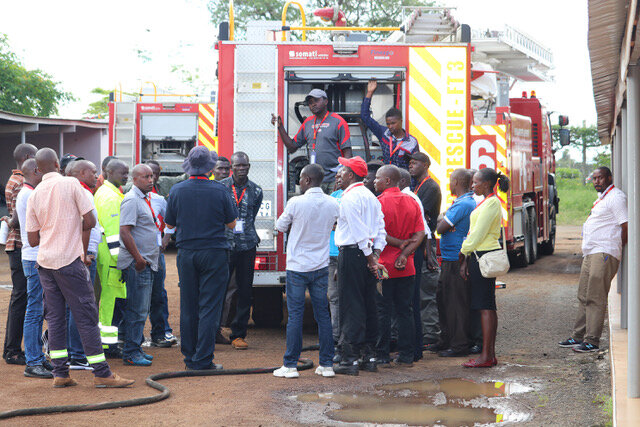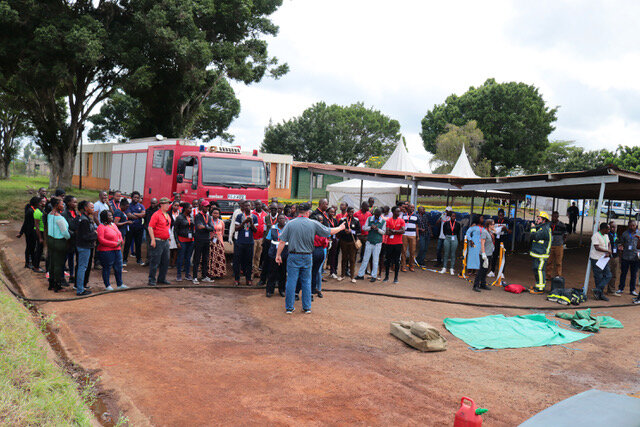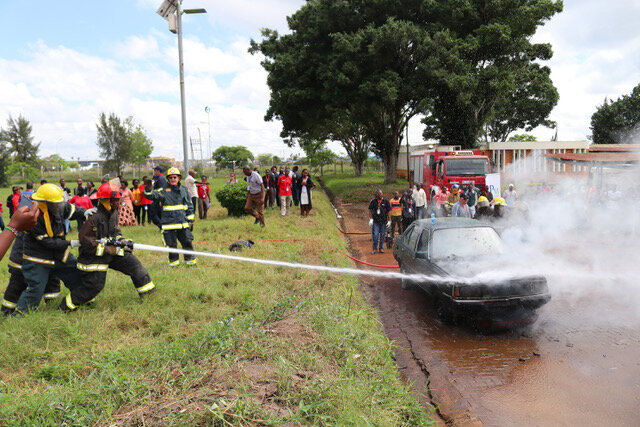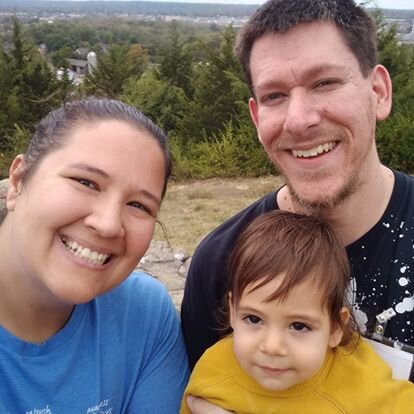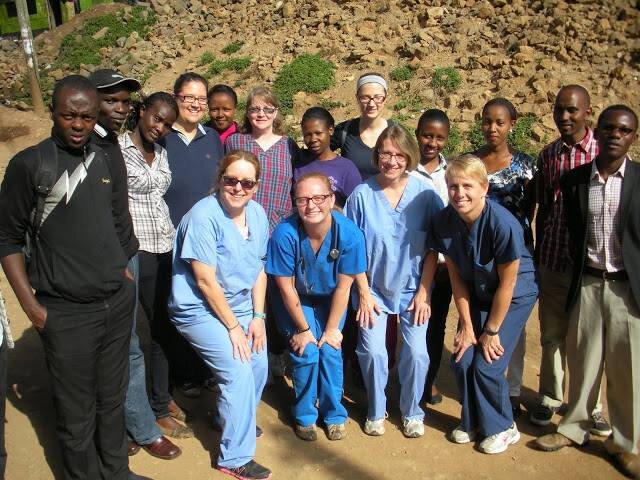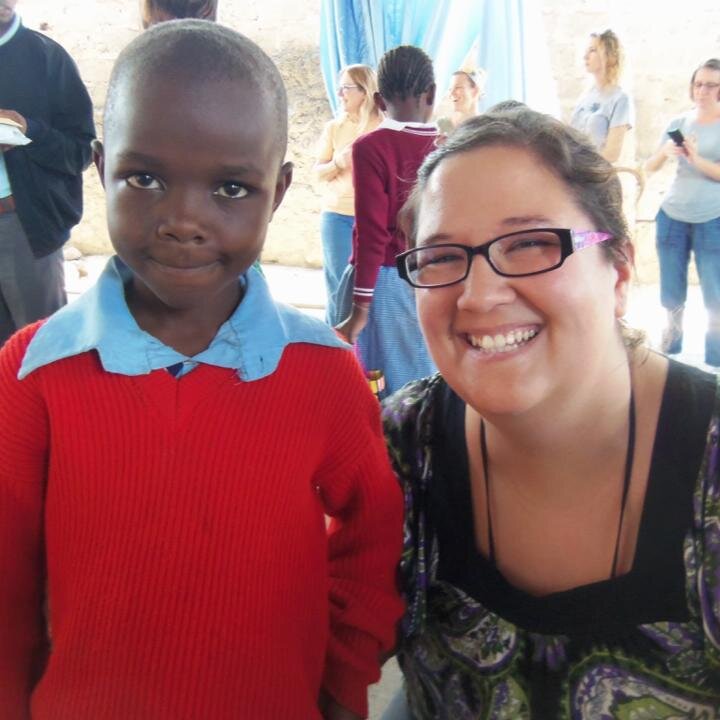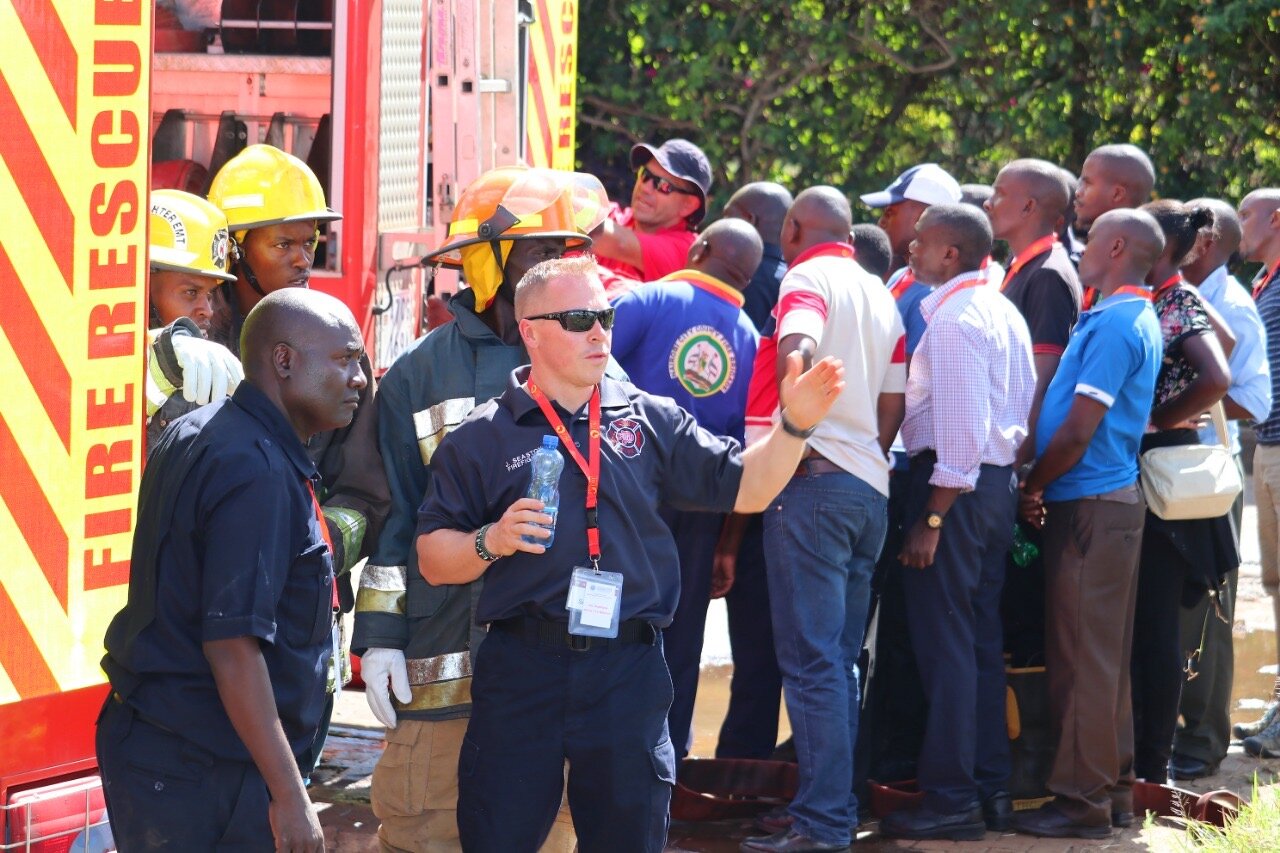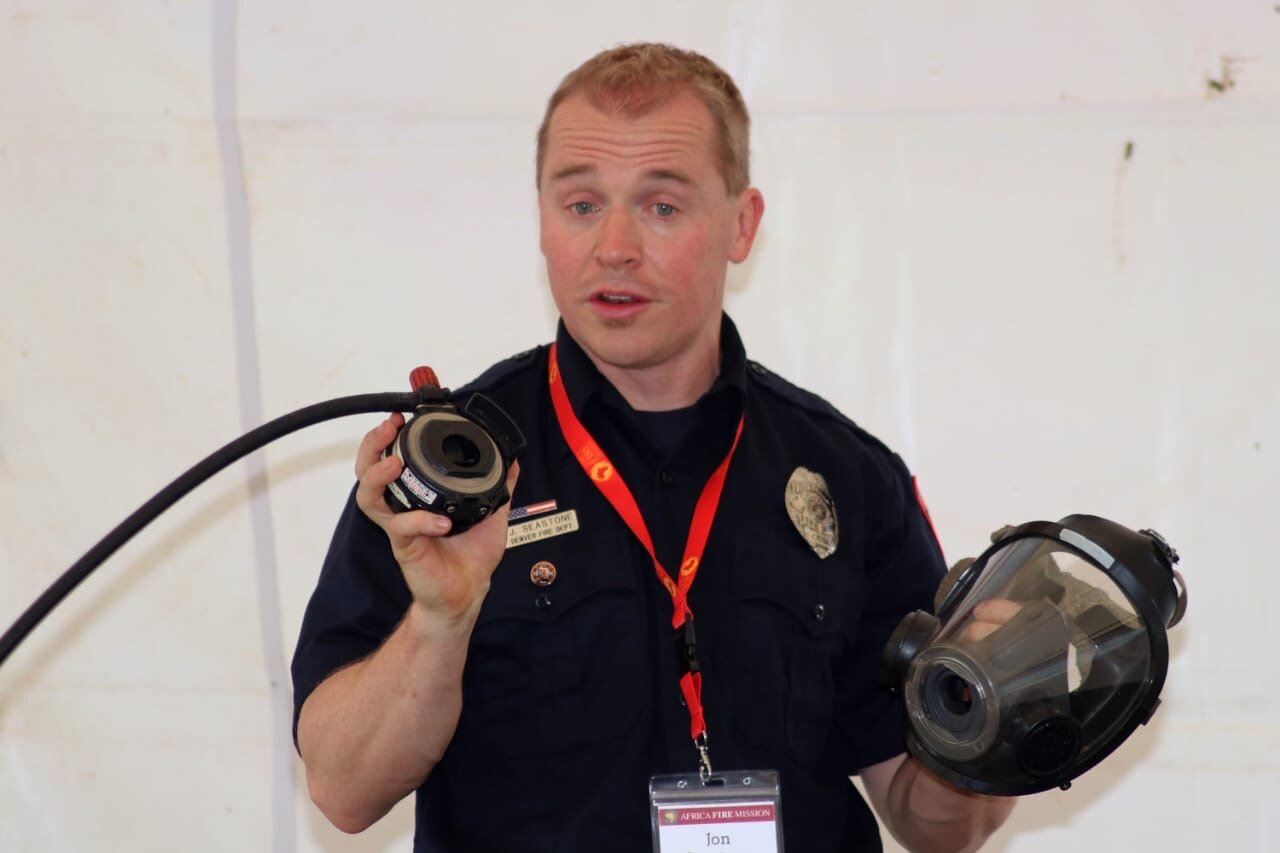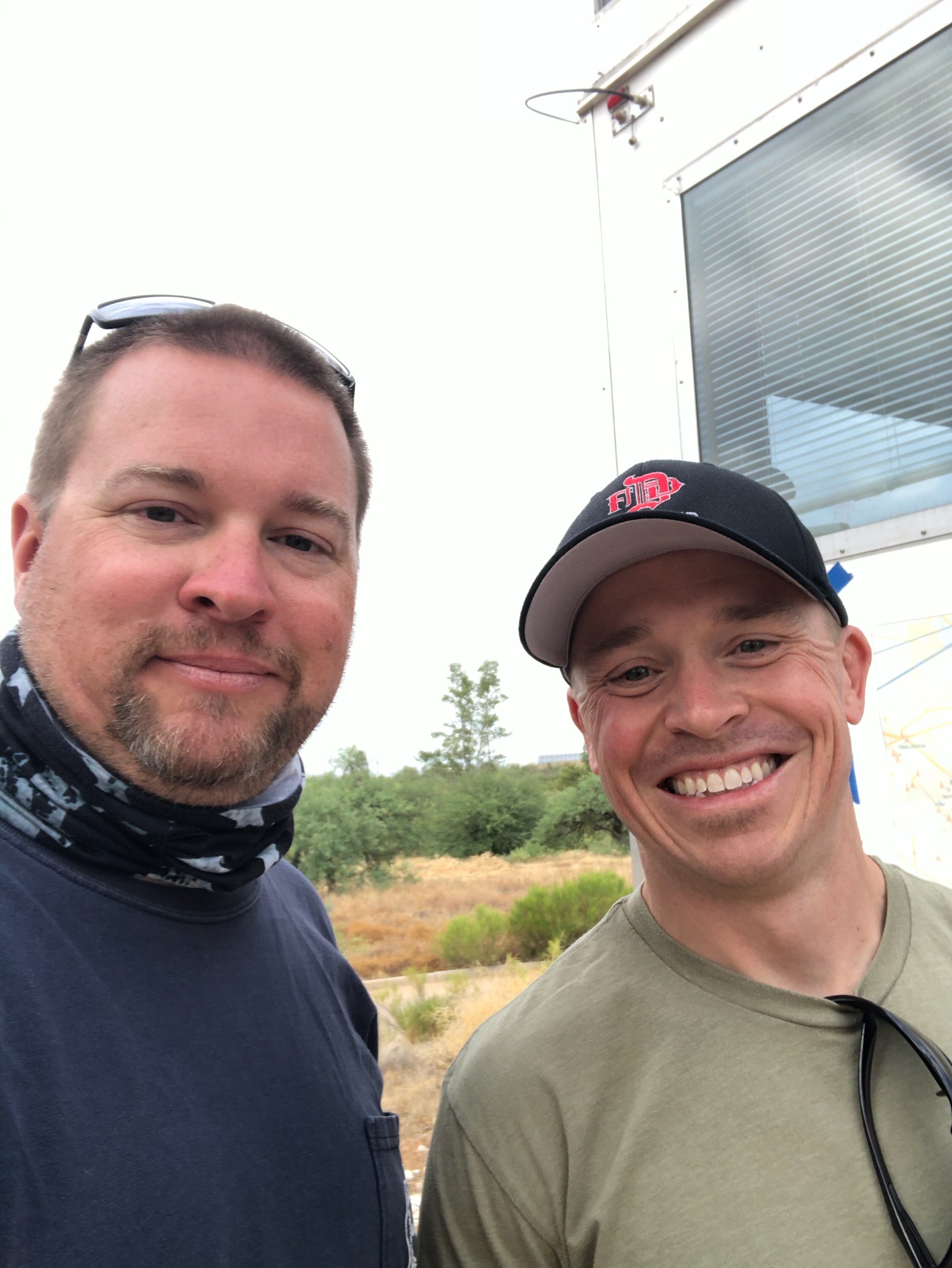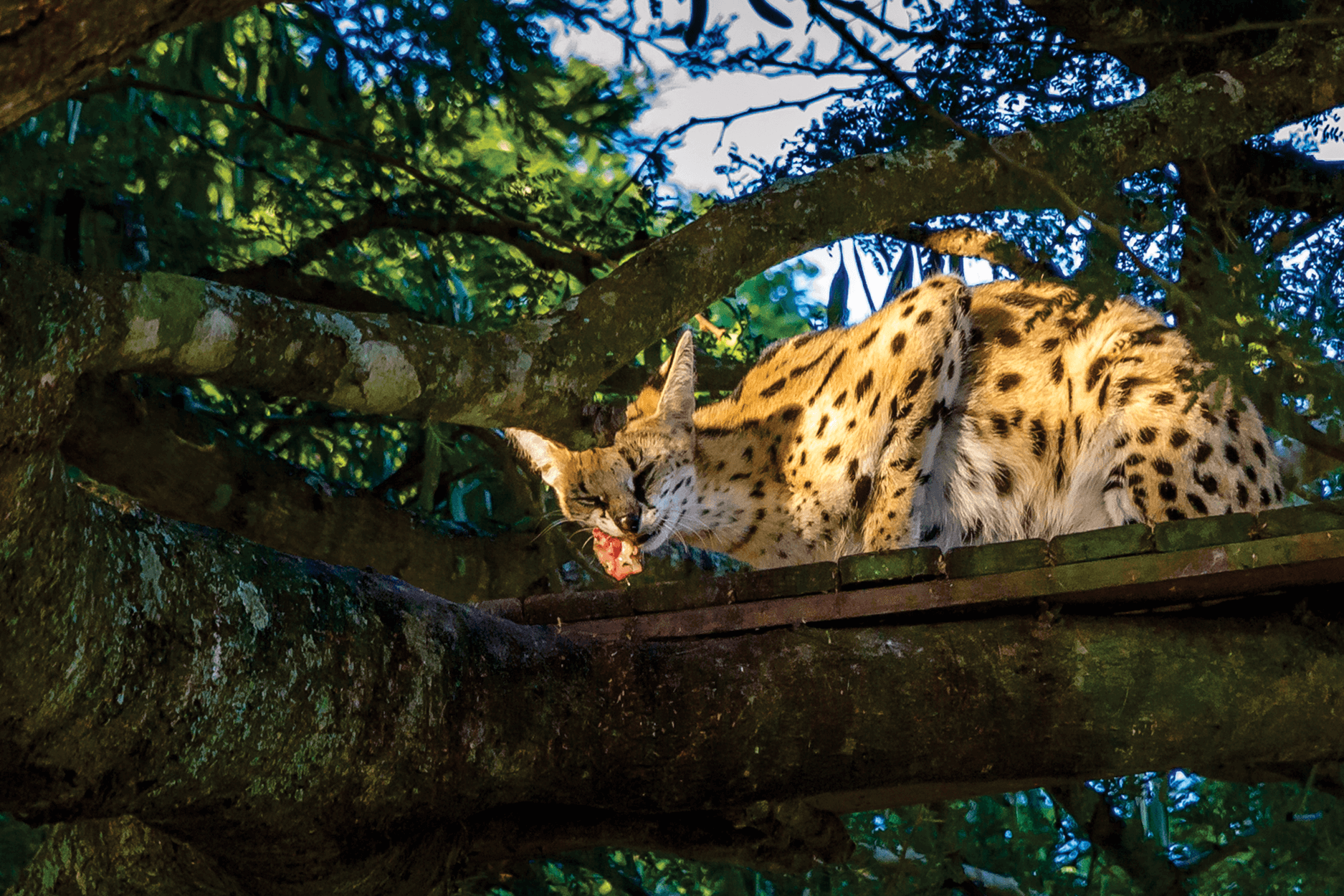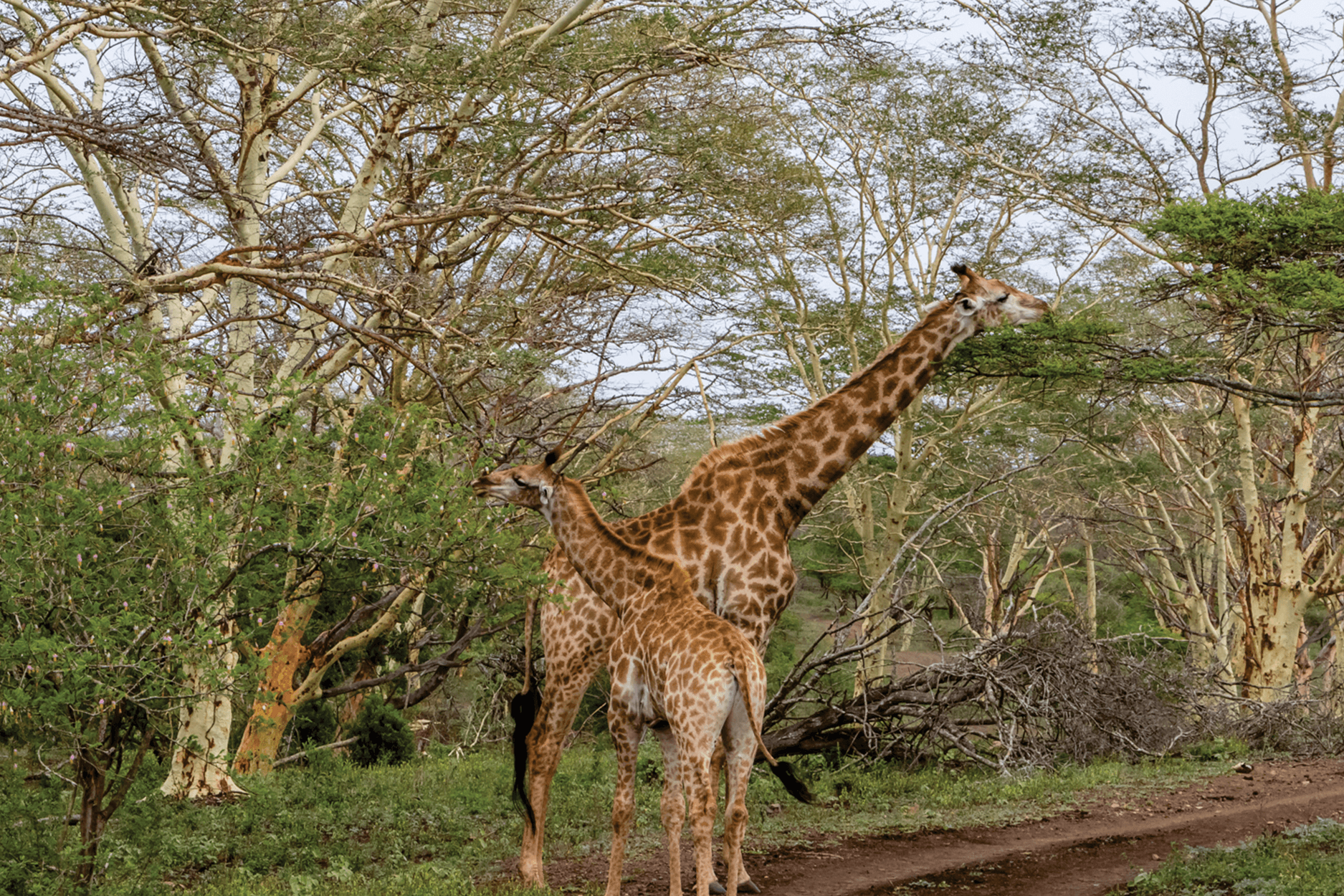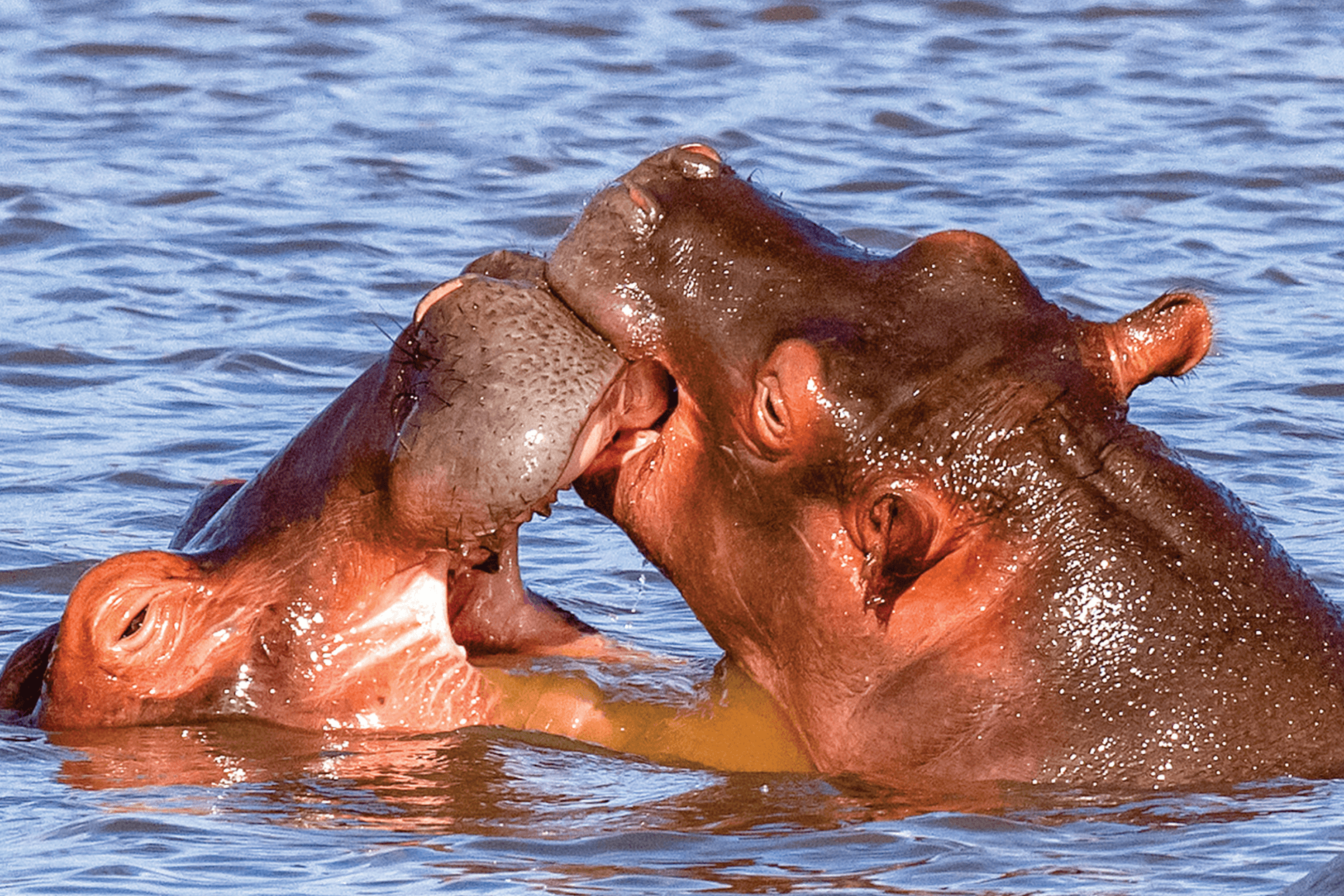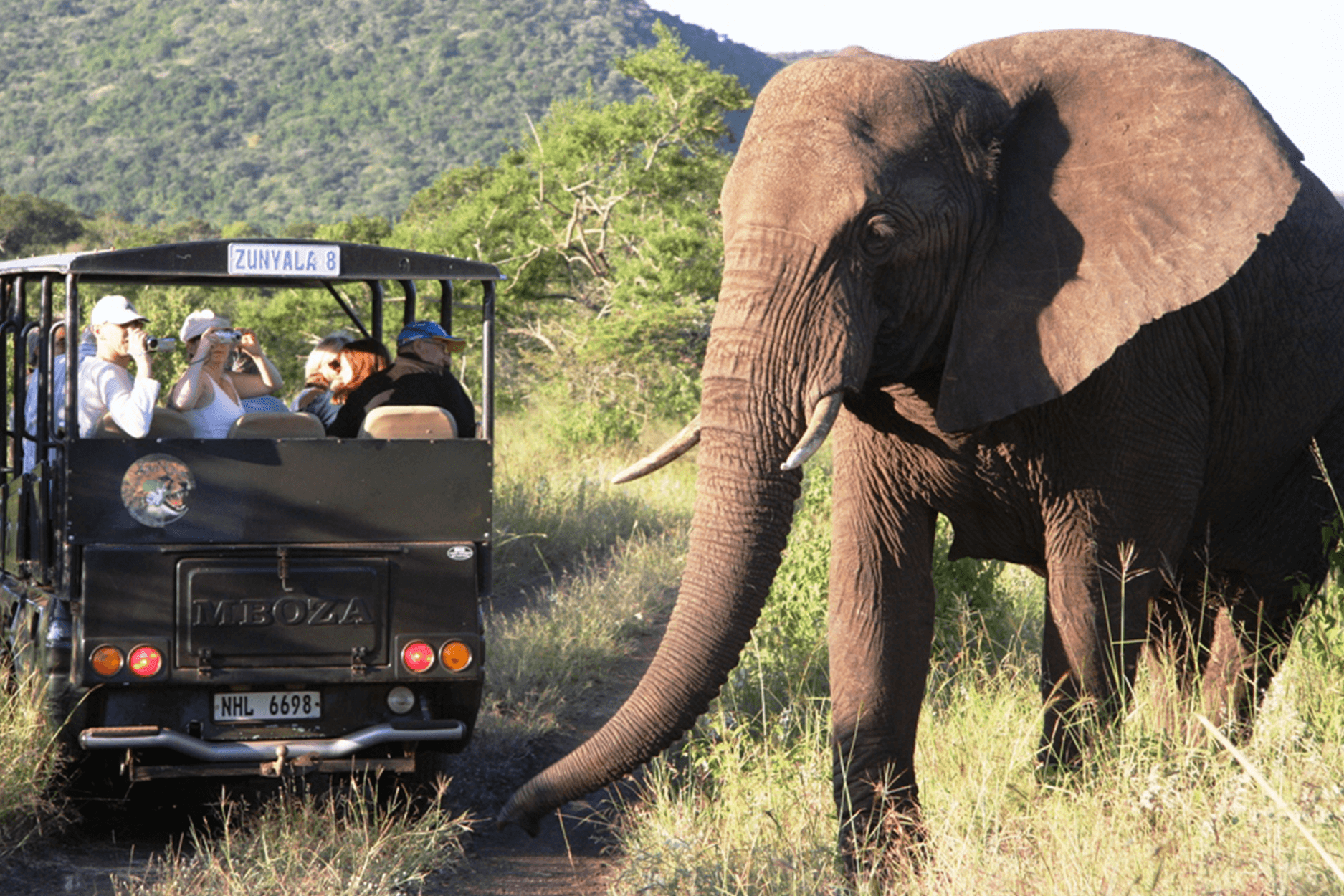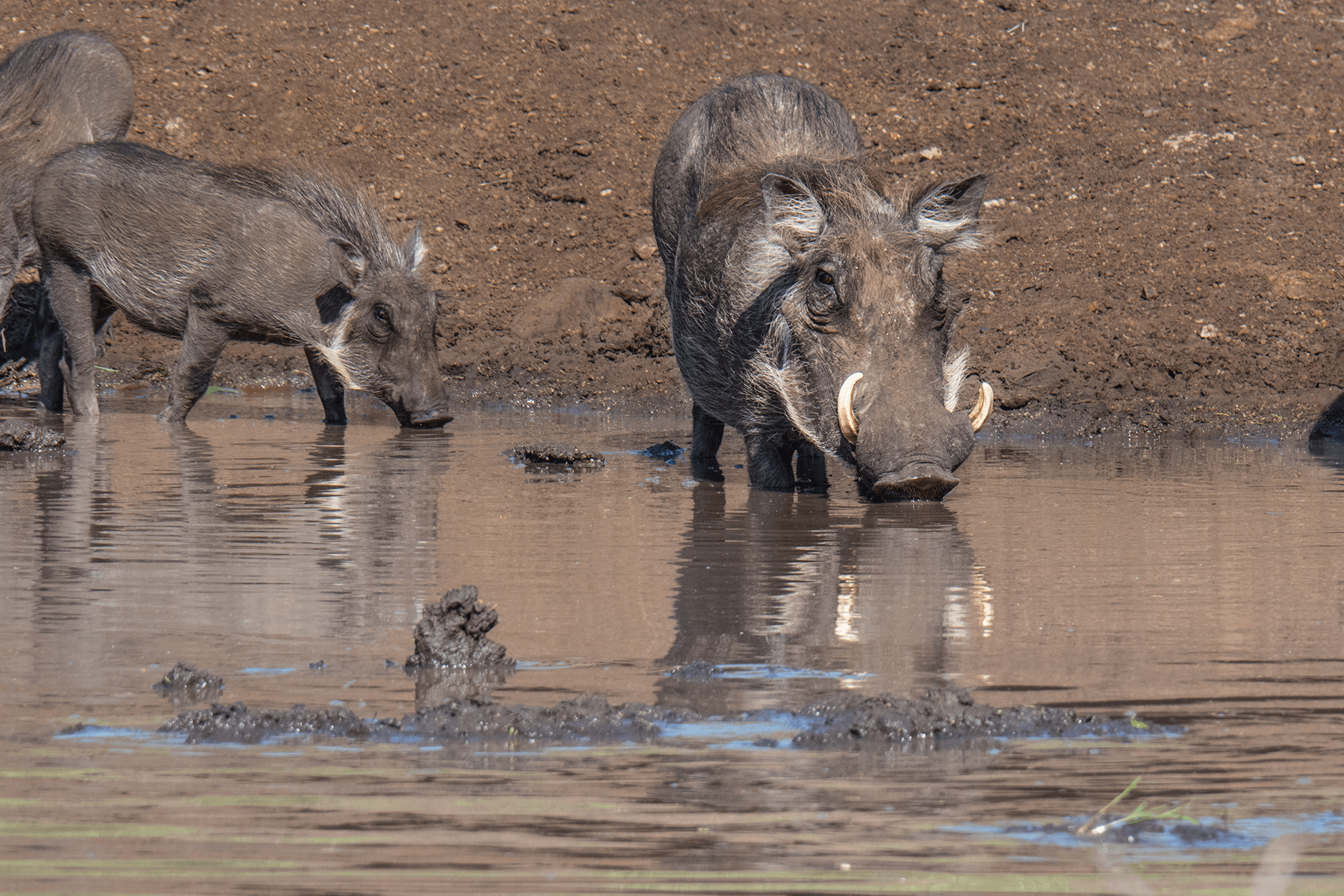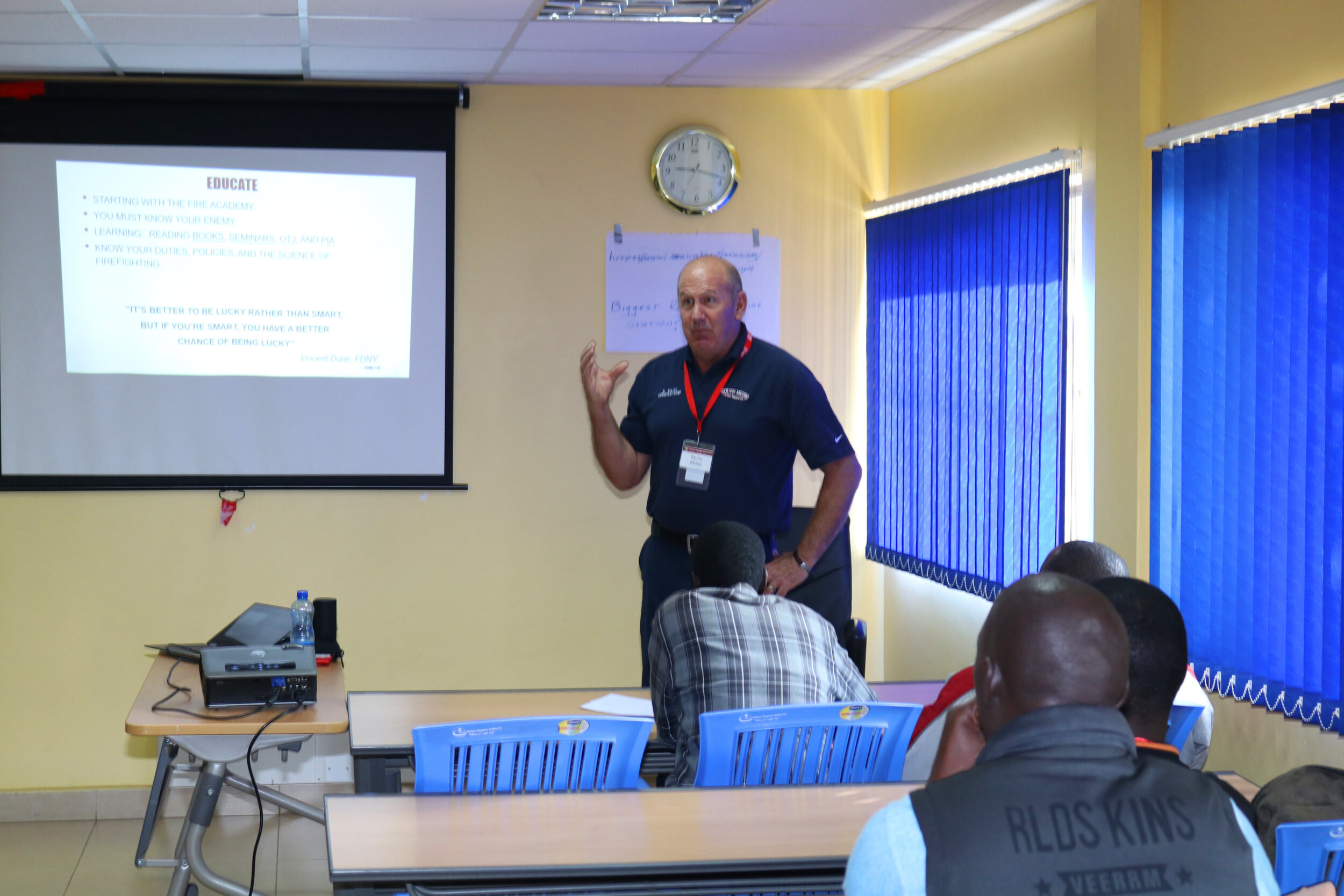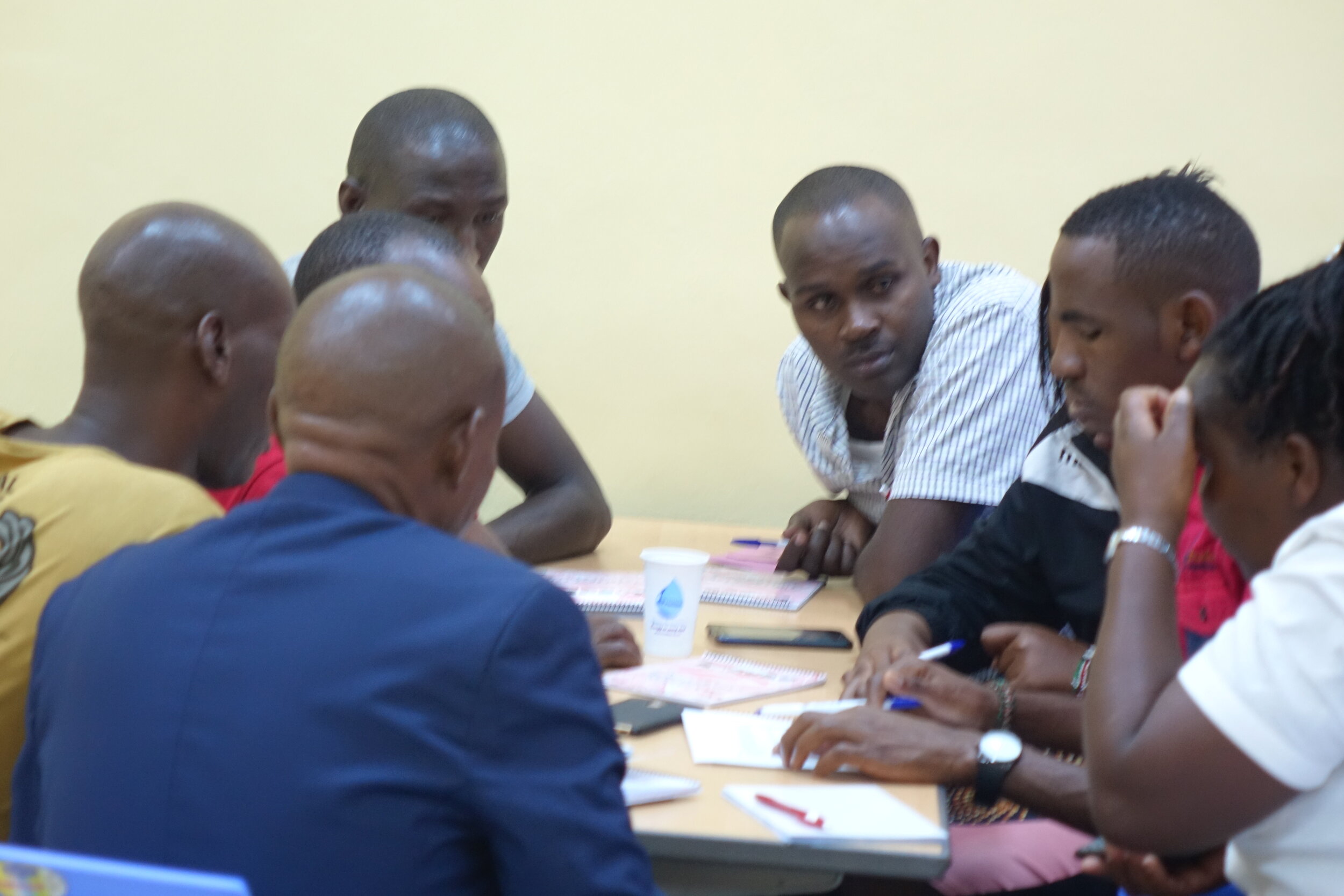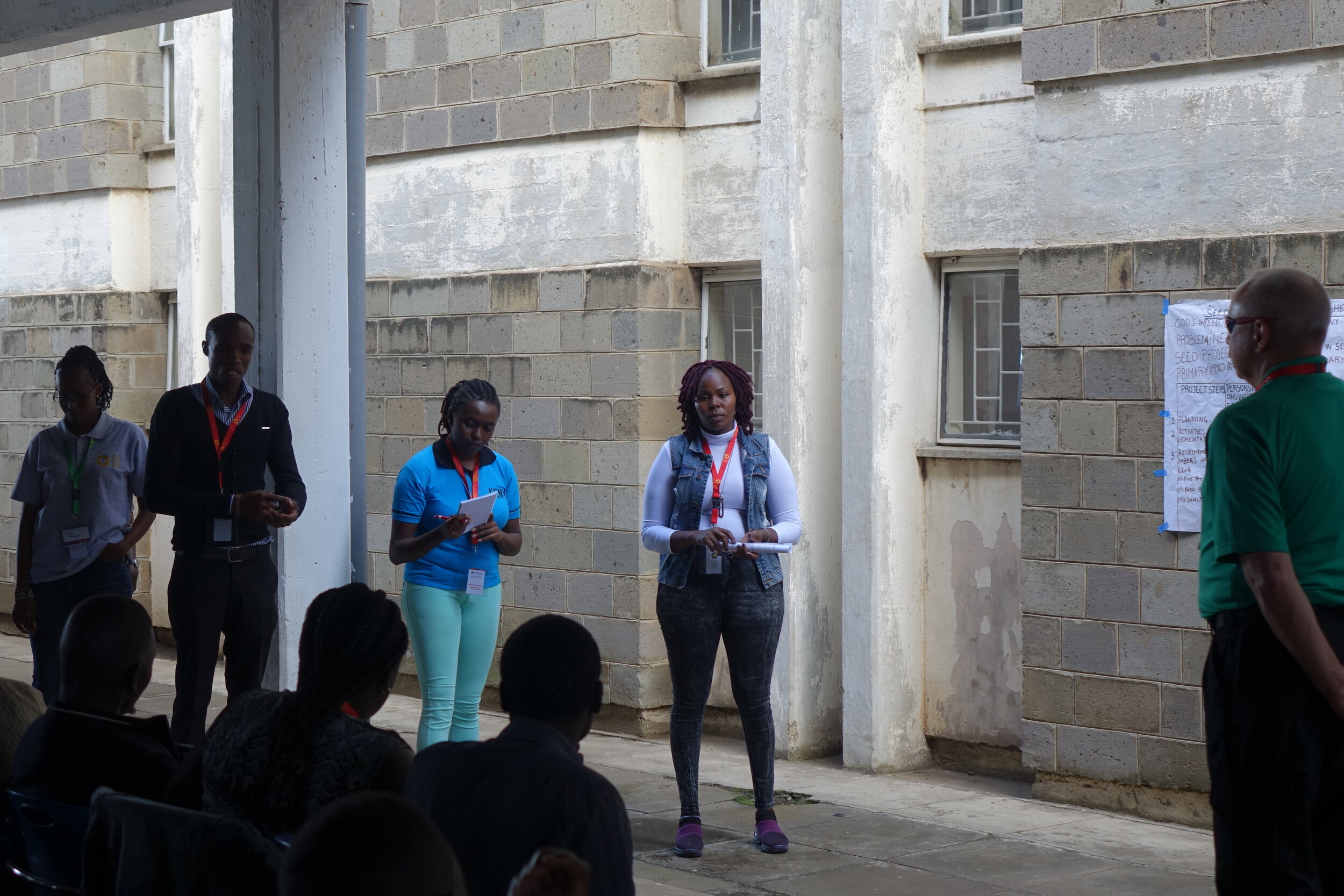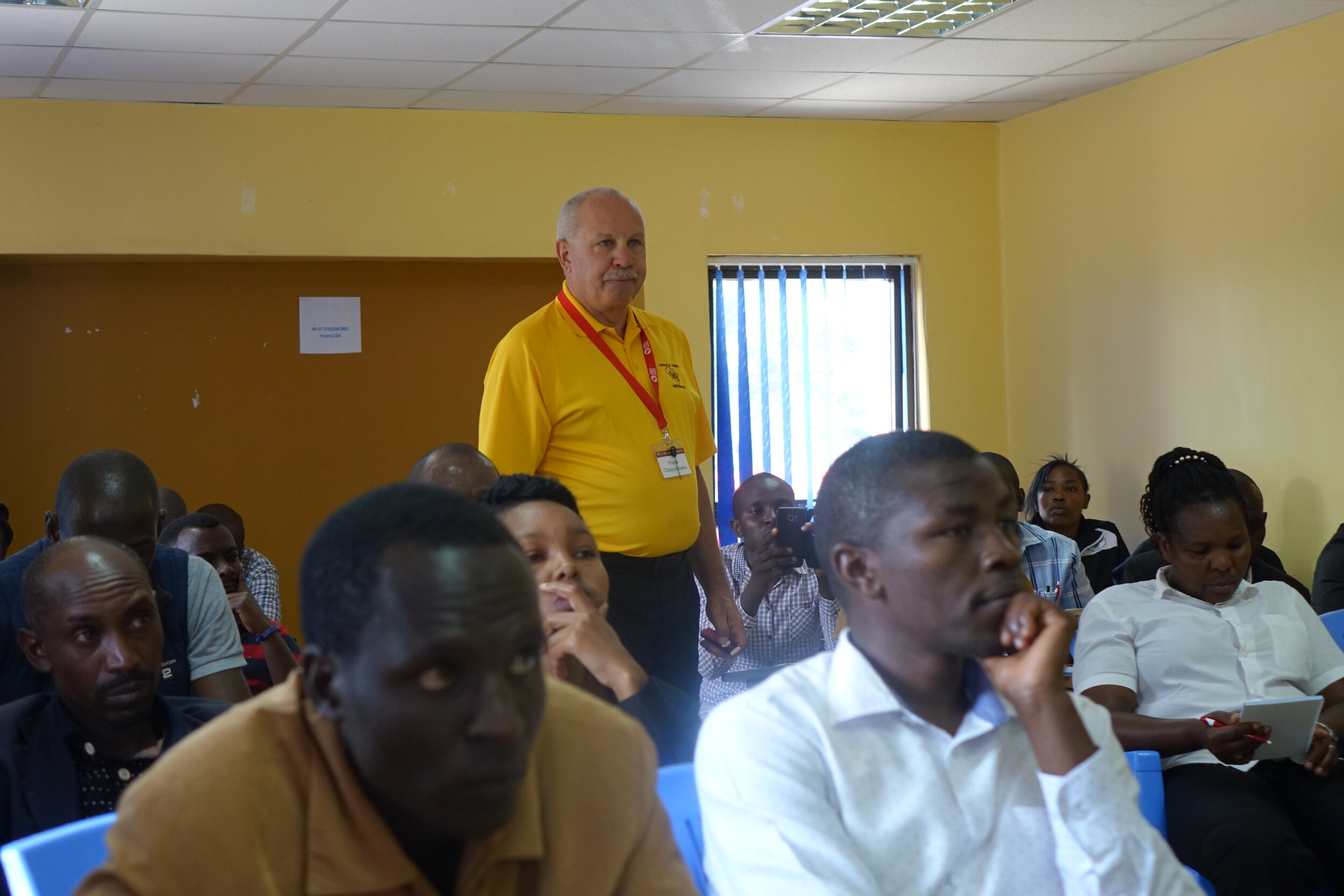“Helmets, Turnout Coat, Pants, Gloves and Self-Contained Breathing Apparatus”
- Robert Rielage, Retired Chief Fire Officer
The use of personal protective equipment (PPE) such as helmets, coats, pants, gloves, boots and self-contained breathing apparatus (SCBA) may not be available to your department or especially not to every firefighter of your department. It is one of our priority goals at Africa Fire Mission to ensure that every firefighter is as safe as possible on the job and that each firefighter is utilizing all of the PPE available, whether fighting a fire, working at an automobile accident, or rescuing a person in an industrial accident.
Your PPE such as your pants, coat and gloves are designed out of very tough material to keep you safe from several things such as from being cut by broken glass, wood or metal. They are also designed to protect you from the heat of the fire so you can get closer to where those who may need to be rescued are located. Your helmet and eye shields are to protect both your head and eyes from falling or flying objects, much the same as your hands and feet are protected by your gloves and boots.
All of your PPE is designed to be worn on every call. Every piece is needed to be worn every time to protect you. It also provides better protection should your fire truck be involved in a traffic accident.
There are also hidden dangers that you may not realize. The smoke and hot gases released by a fire also contain contaminates – hazardous or poisonous chemicals like cyanide or carcinogenic particles released by the foam in burning furniture can cause you over time to develop cancer – one of the leading causes of death among firefighters. Unfortunately, while PPE can help protect you, these chemicals produced by the smoke and fire can also cling to your PPE causing an indirect exposure that can also make you sick.
What can you do? The best thing is to briefly wash down your PPE with water at the fire scene. This is called “gross decontamination” and it washes off the majority of the bad chemicals, soot and smoke from your PPE. Washing your PPE afterwards with a brush, soap and water is even better at keeping it clean.
If your department has self-contained breathing apparatus (SCBA) you should wear it anytime there is fire and smoke present – even on an automobile fire. This protects your lungs from these same deadly chemicals. After using your SCBA, the face piece needs to be cleaned, again with soap and water, and the bottle and harness at minimum needs to be hosed off to keep it clean.
If you do not have SCBA, then always try to approach a fire with the wind at your back to blow the smoke and hot gases away from you. Remember, your health and safety as firefighters are very important. You protect the citizens of your district from harm. Wearing your full PPE is one of the most important things you can do to not only protect yourself, but also everyone in your community.

